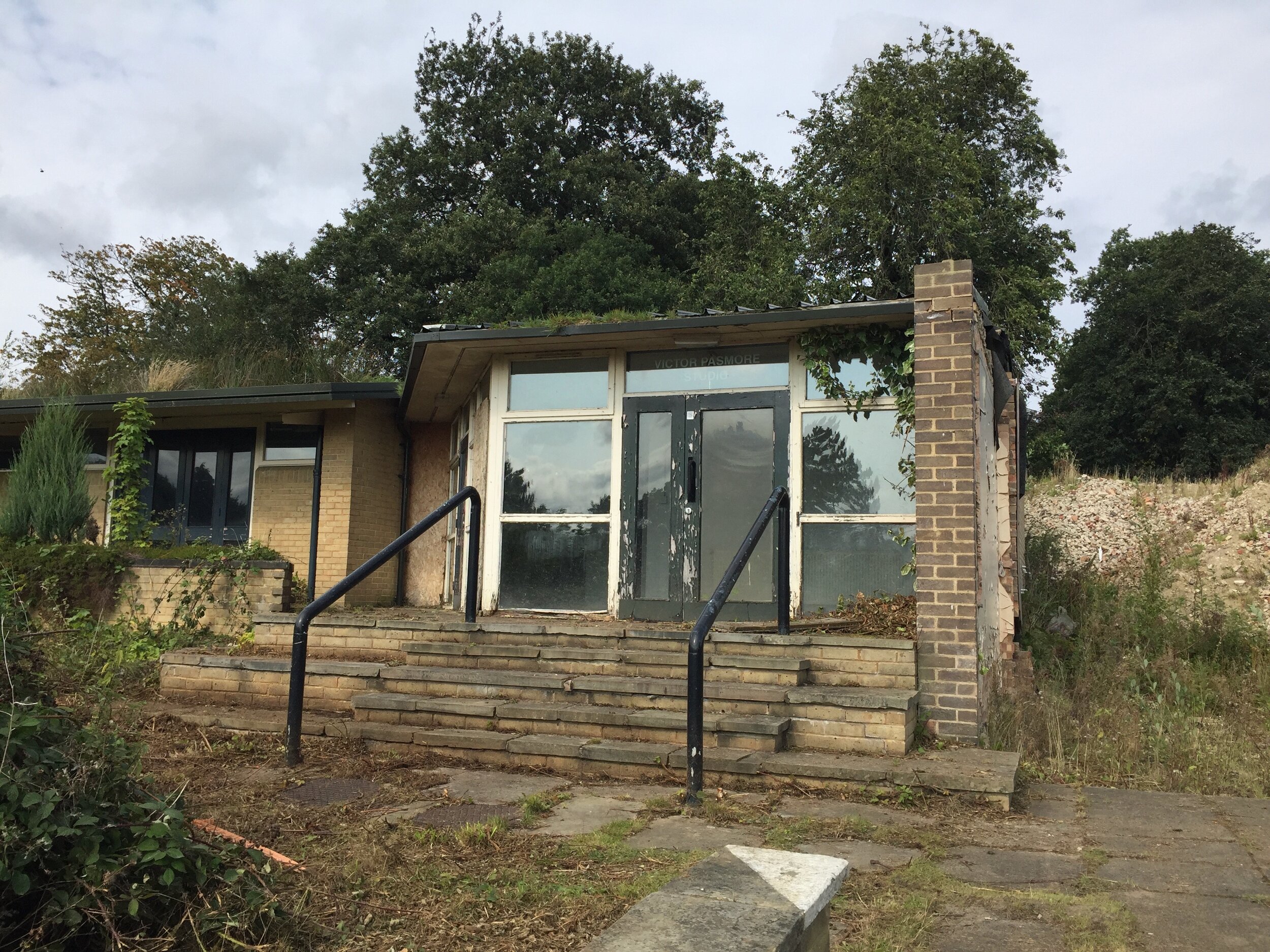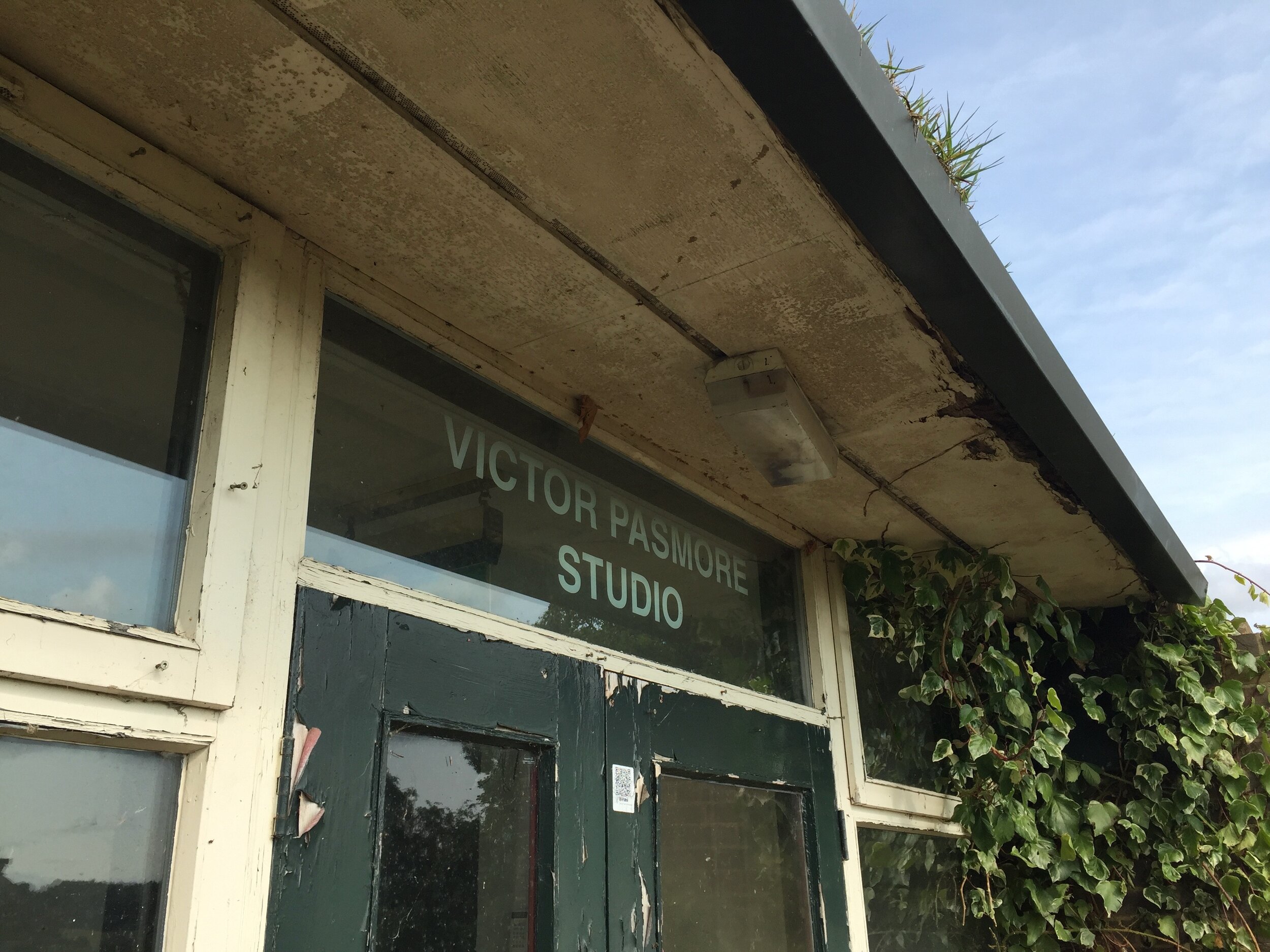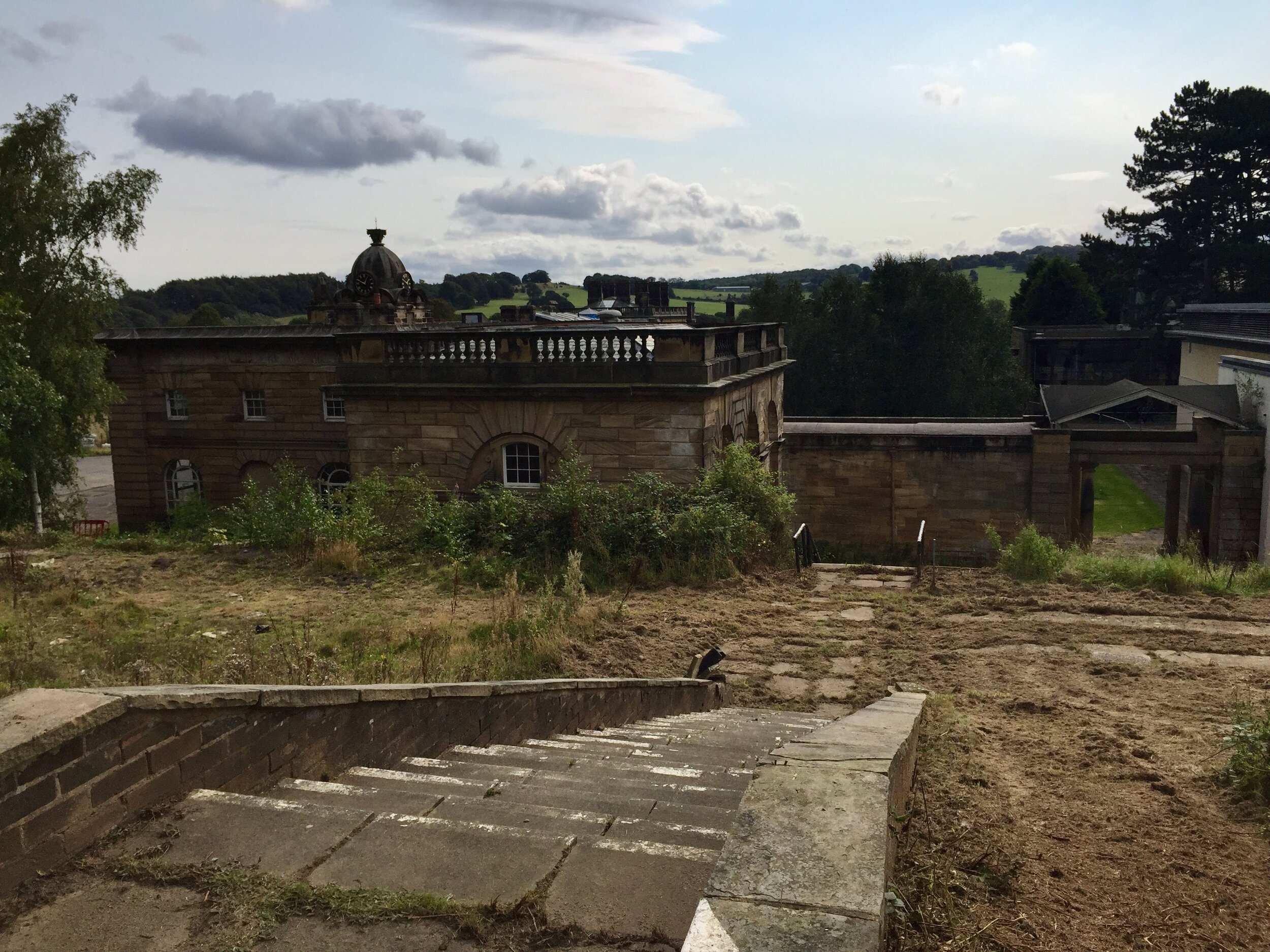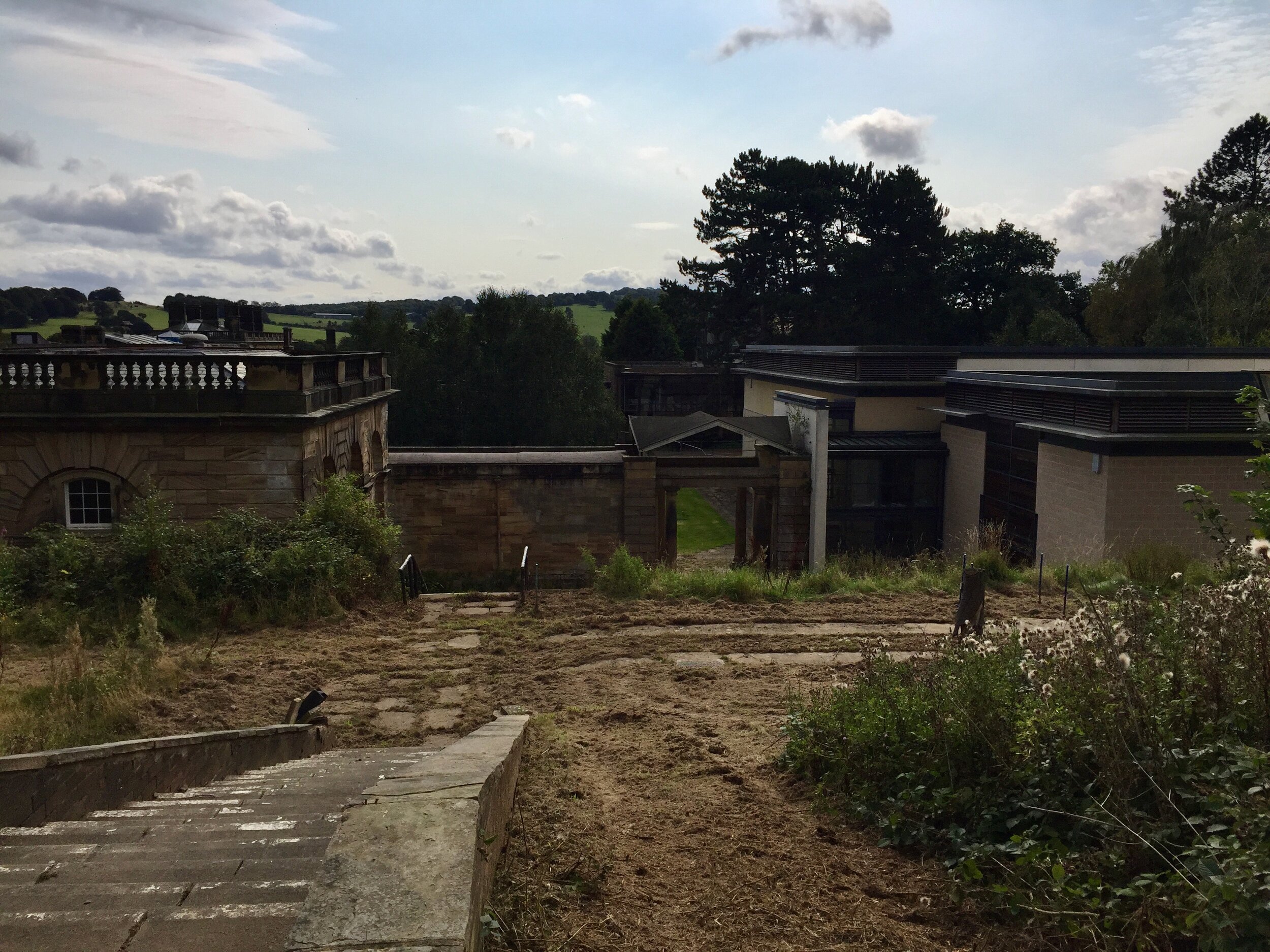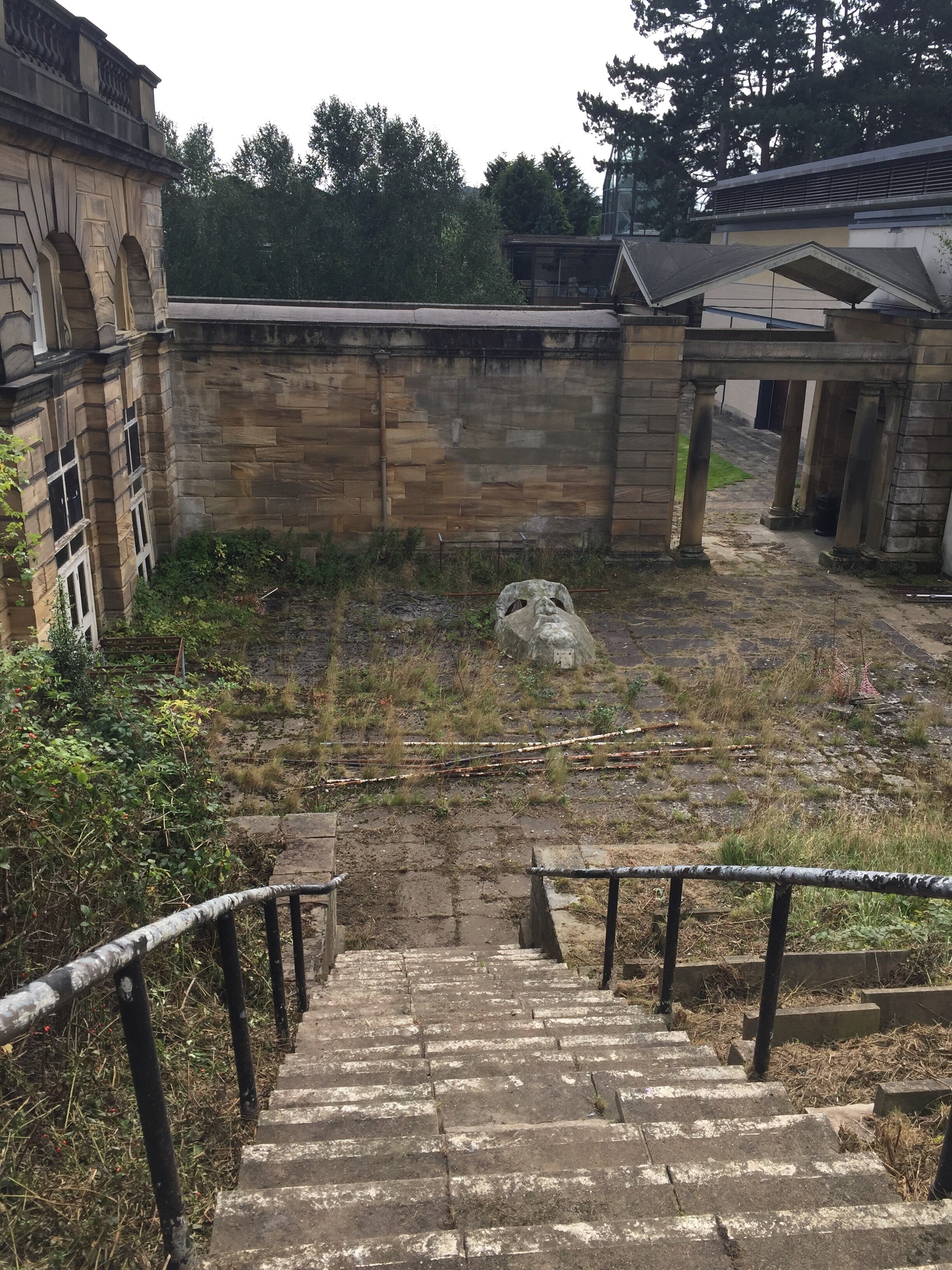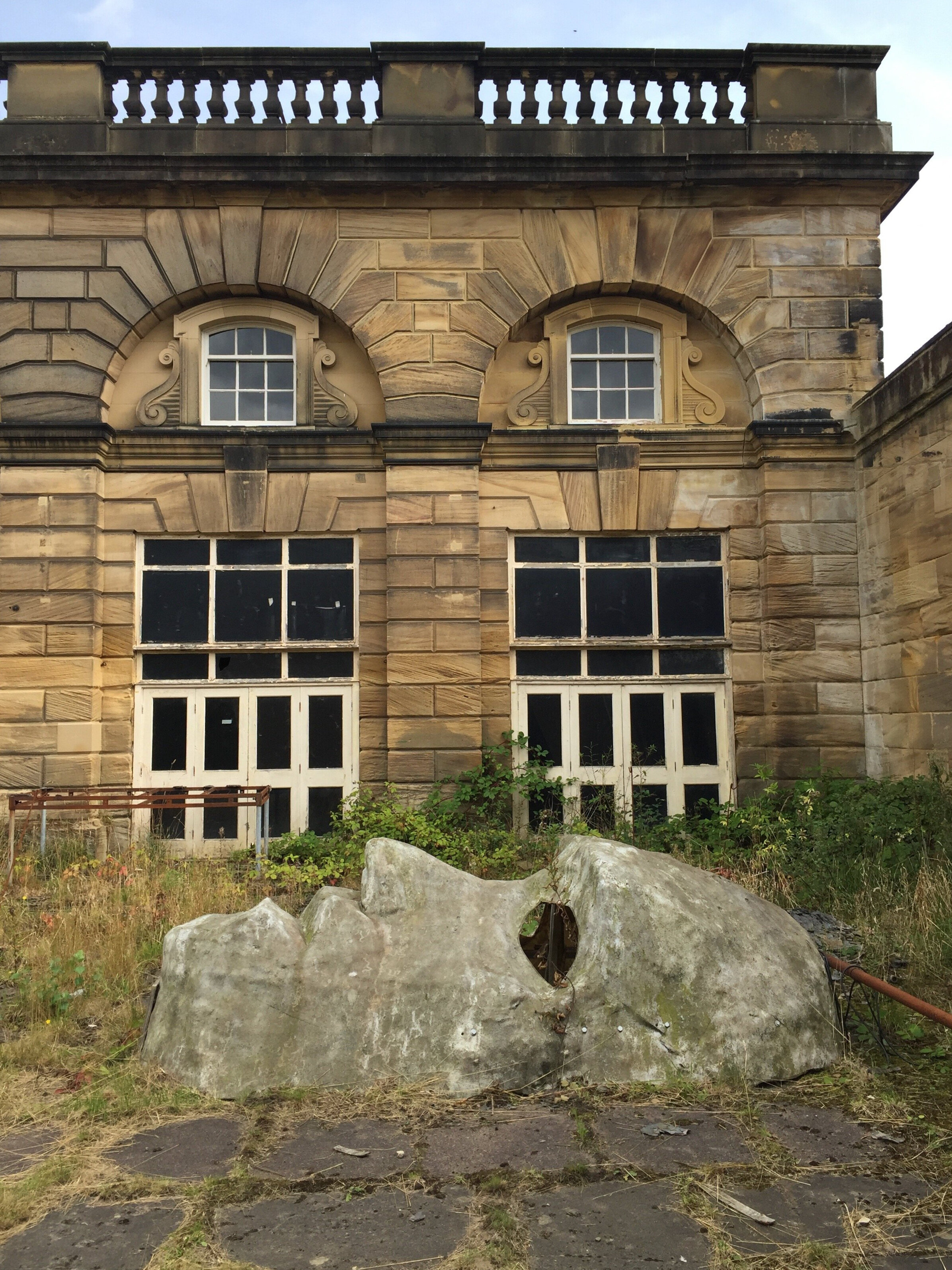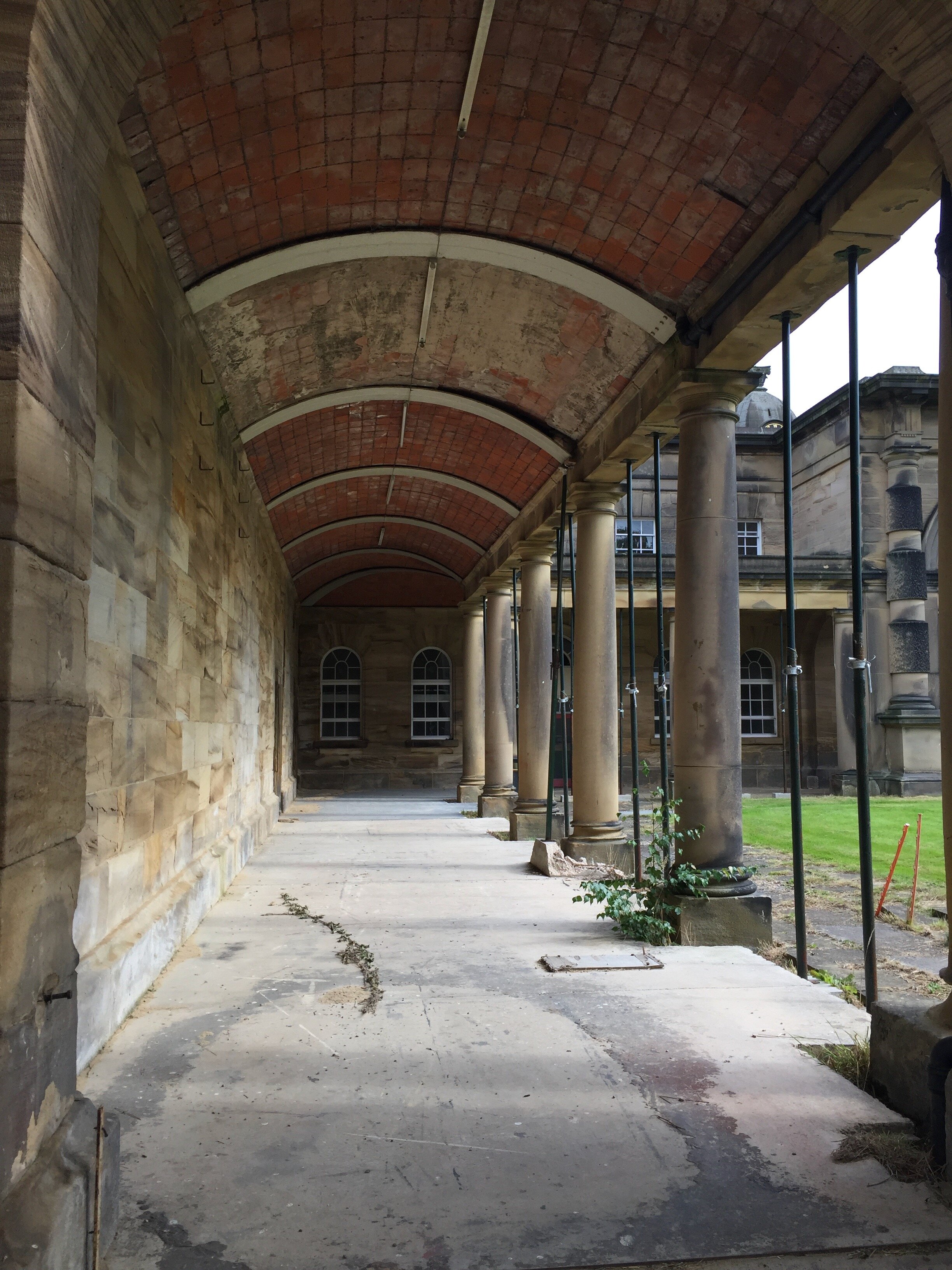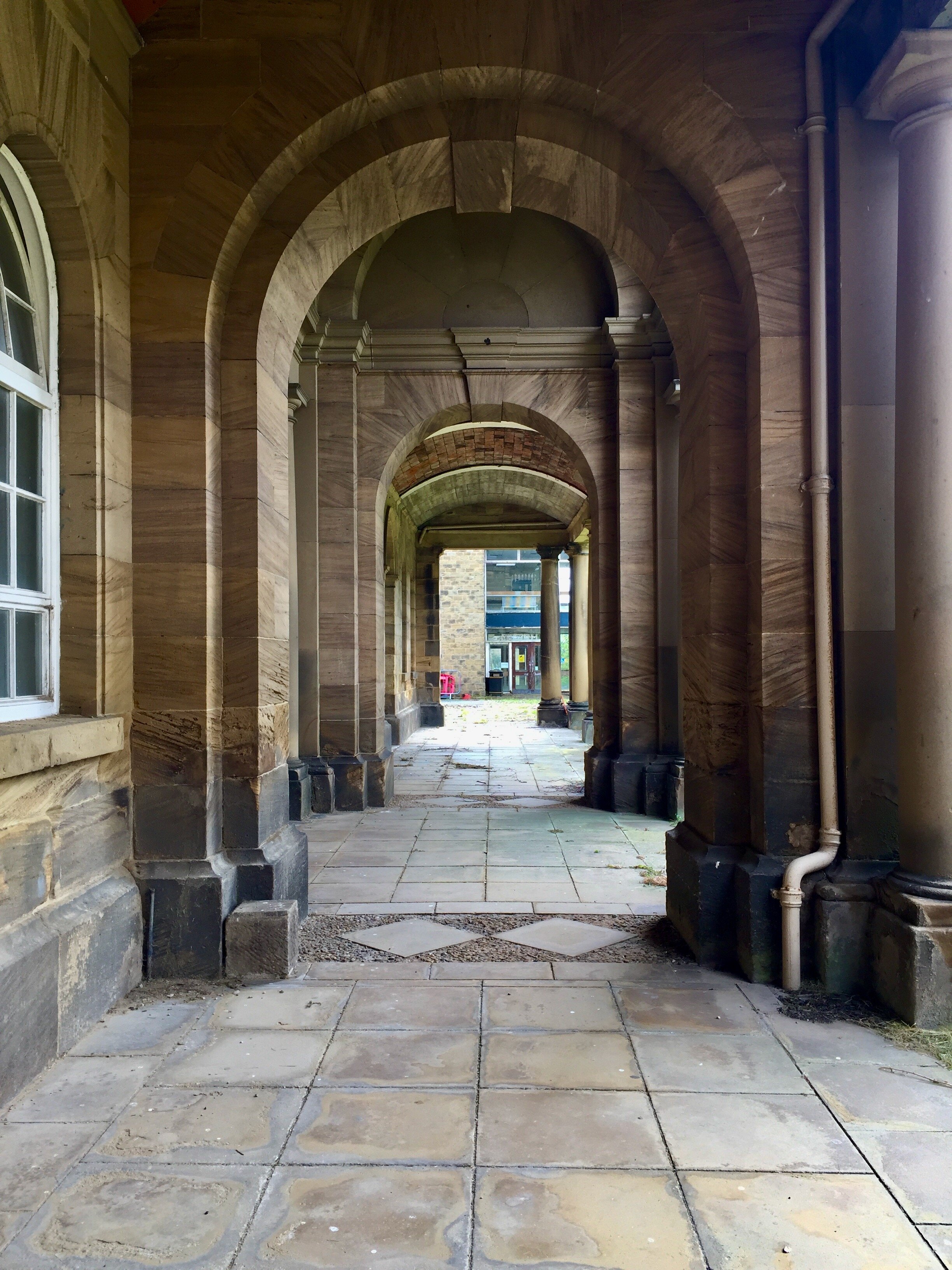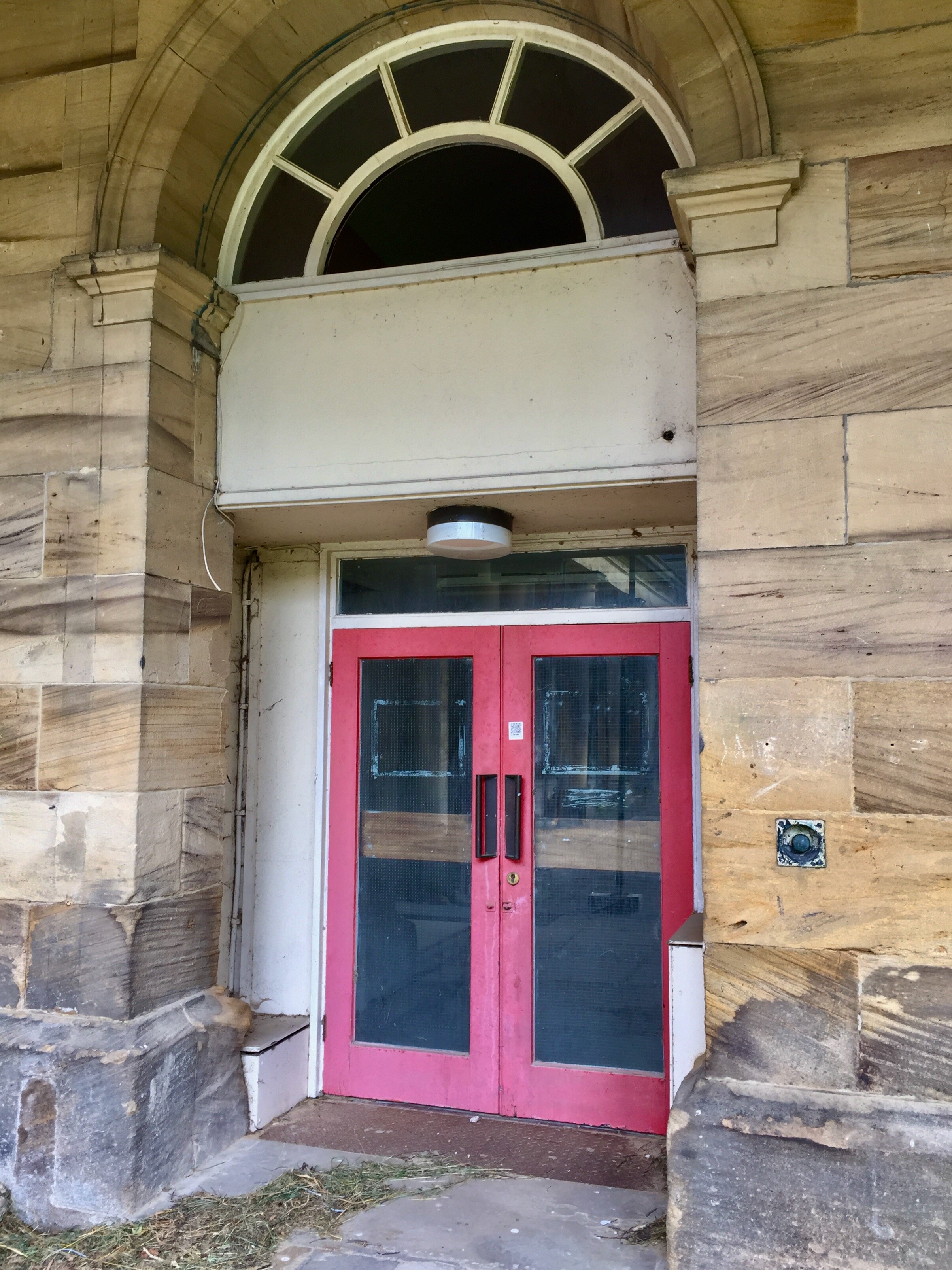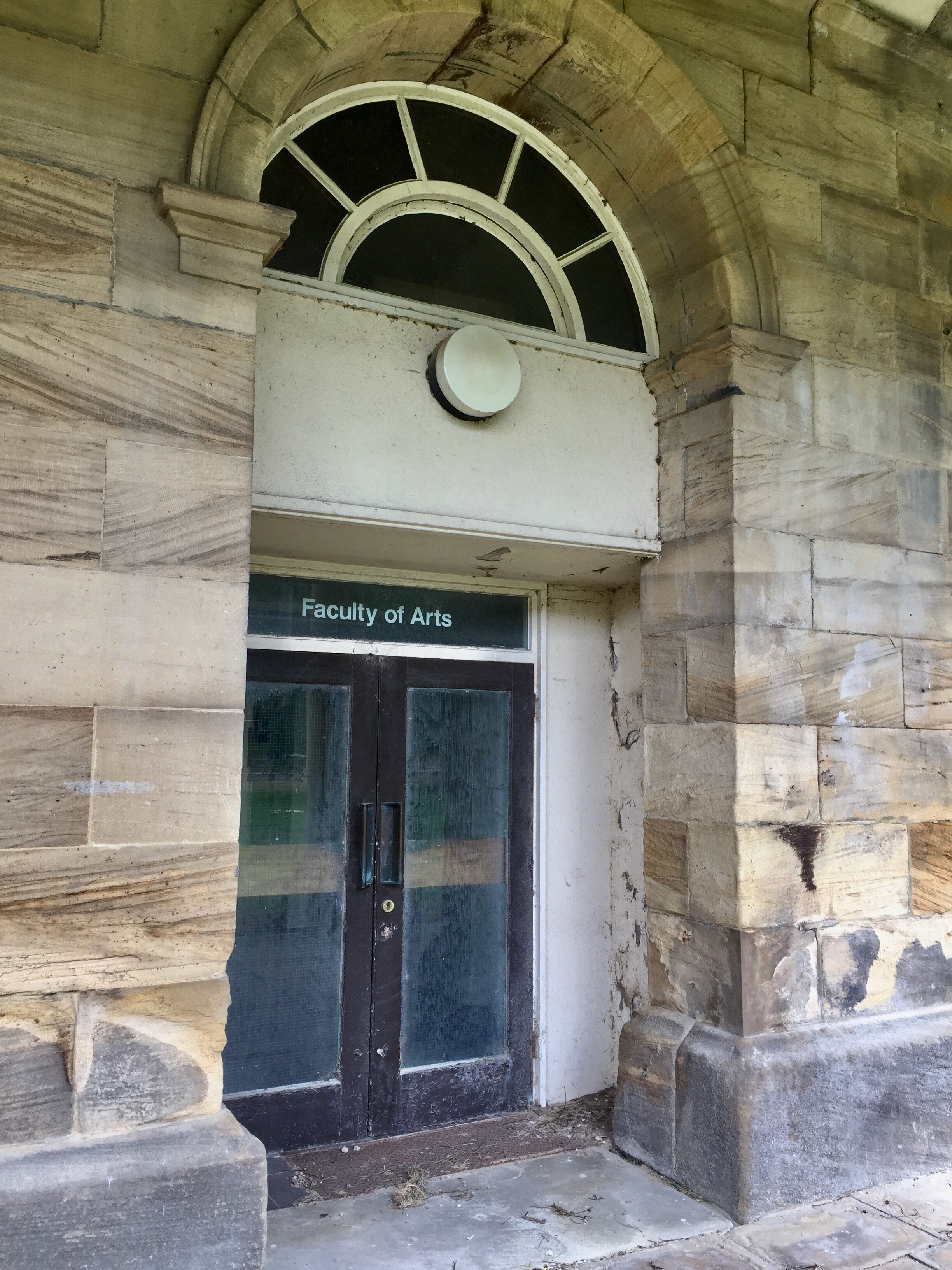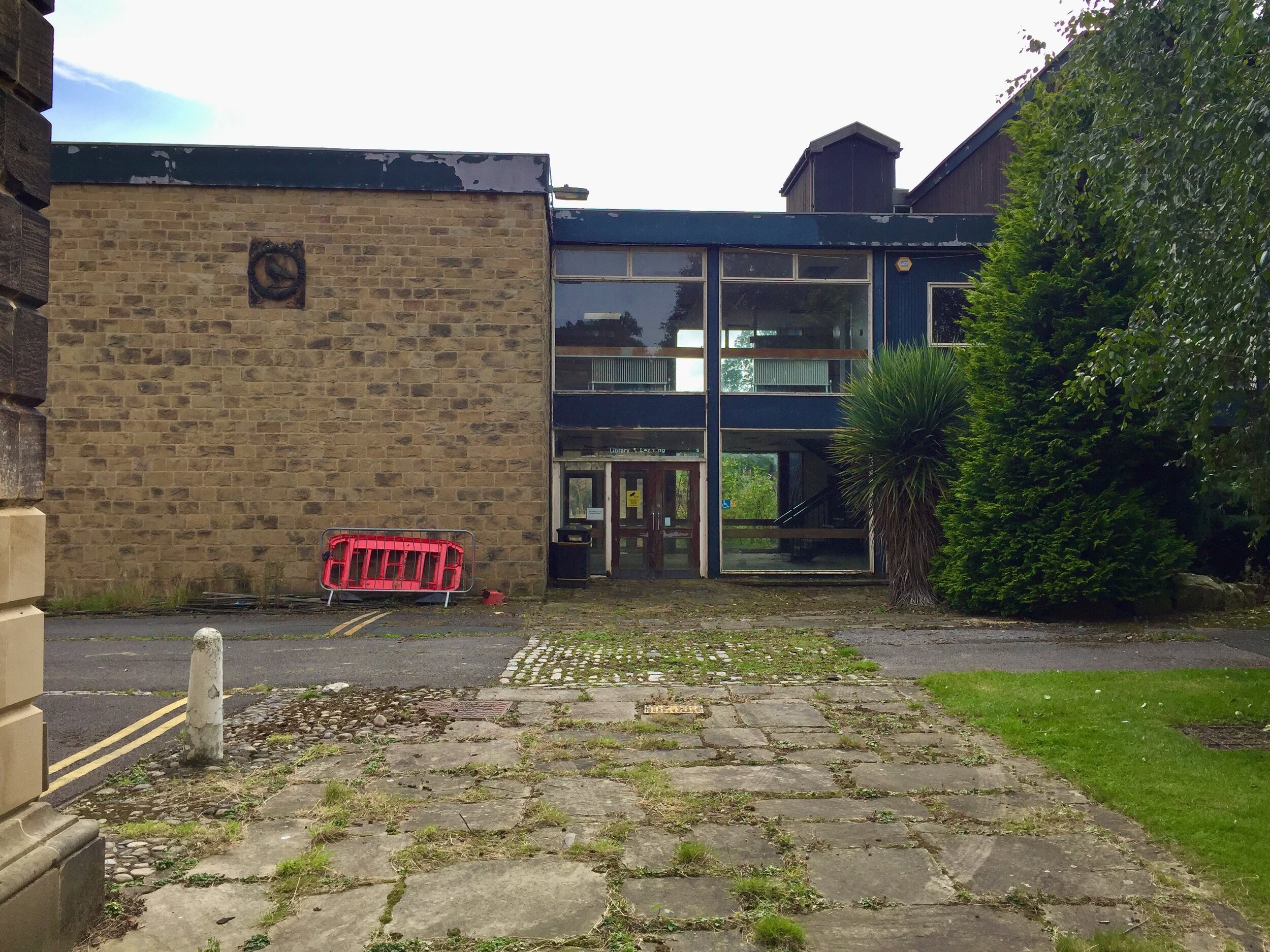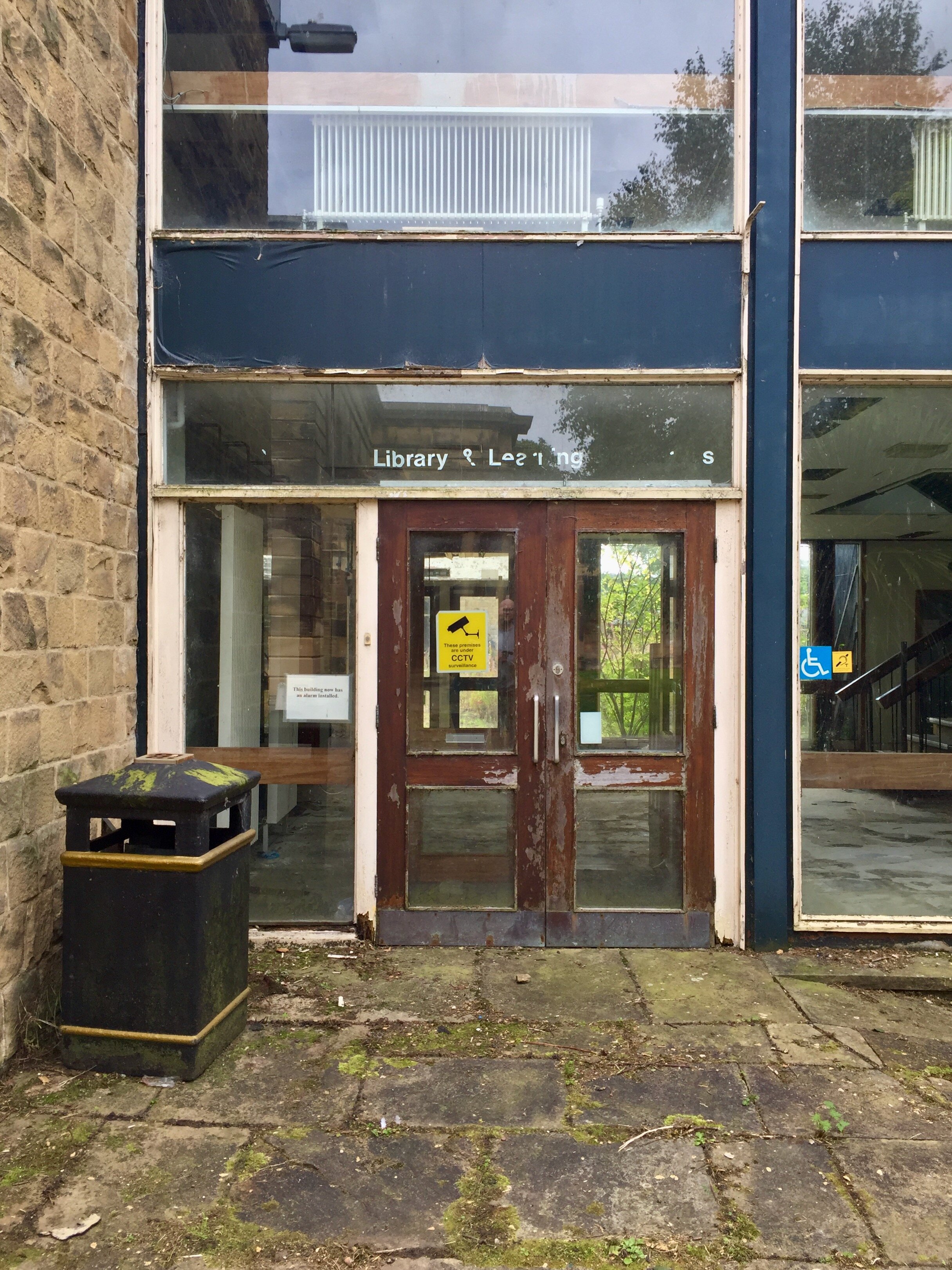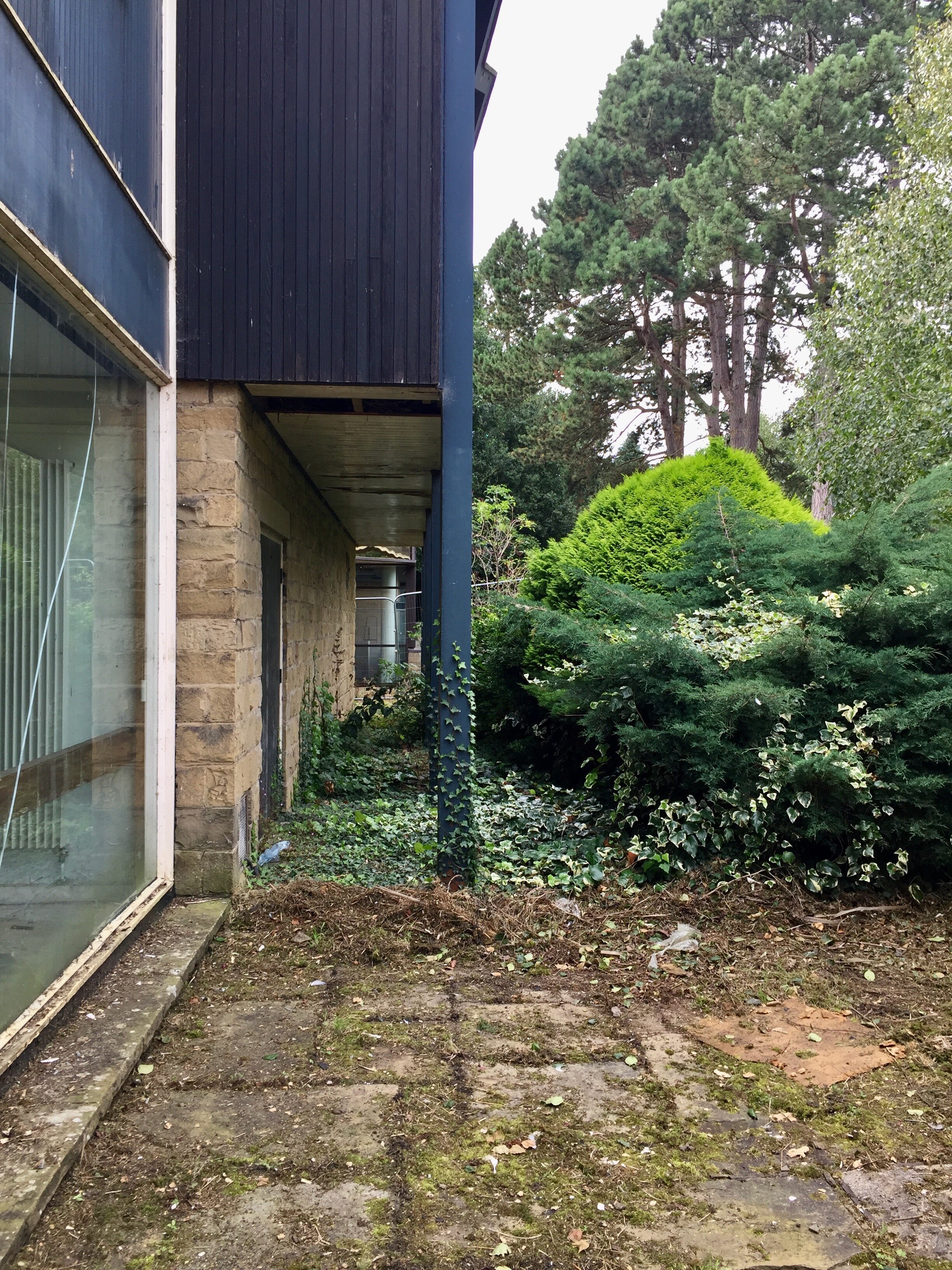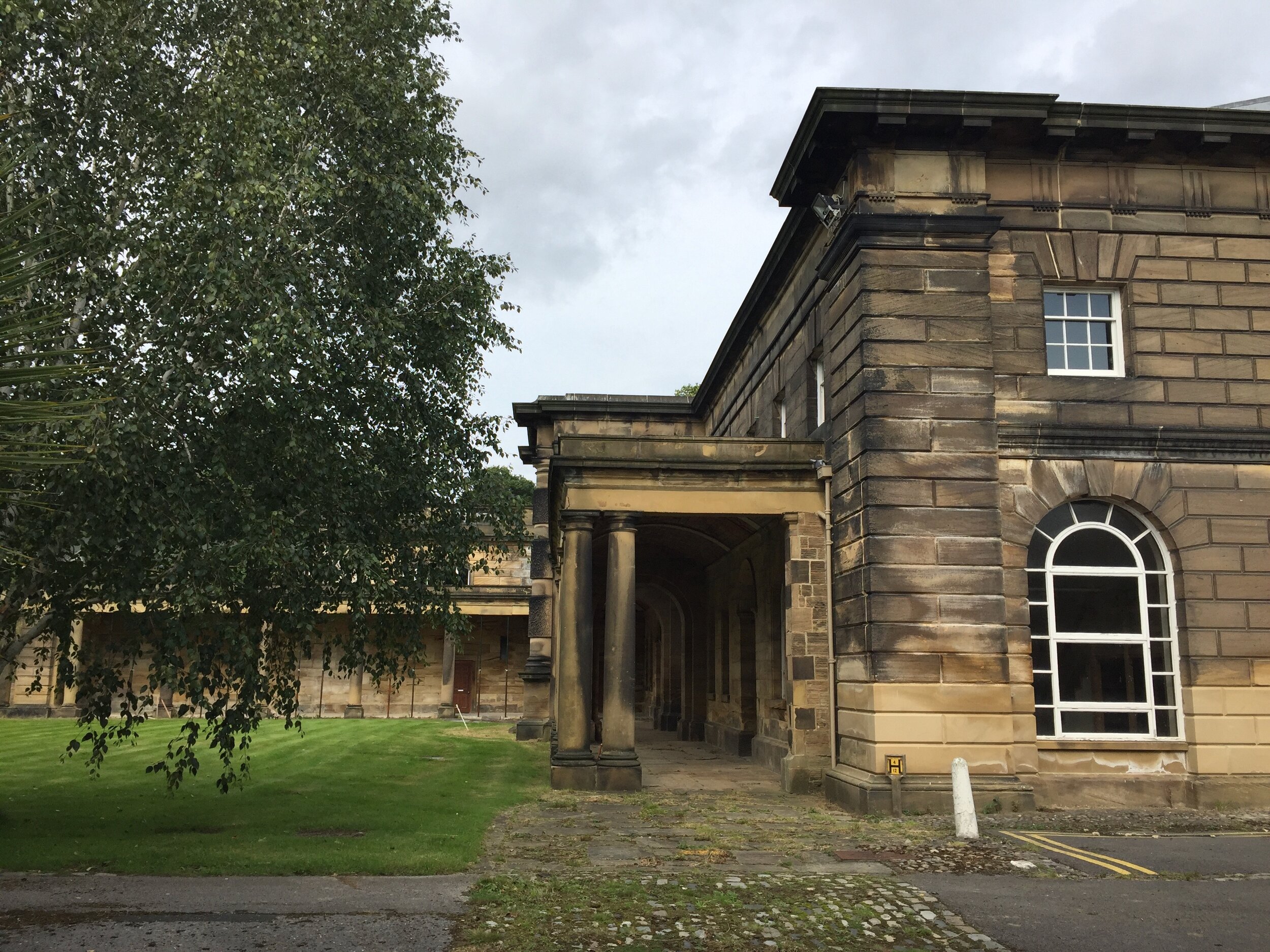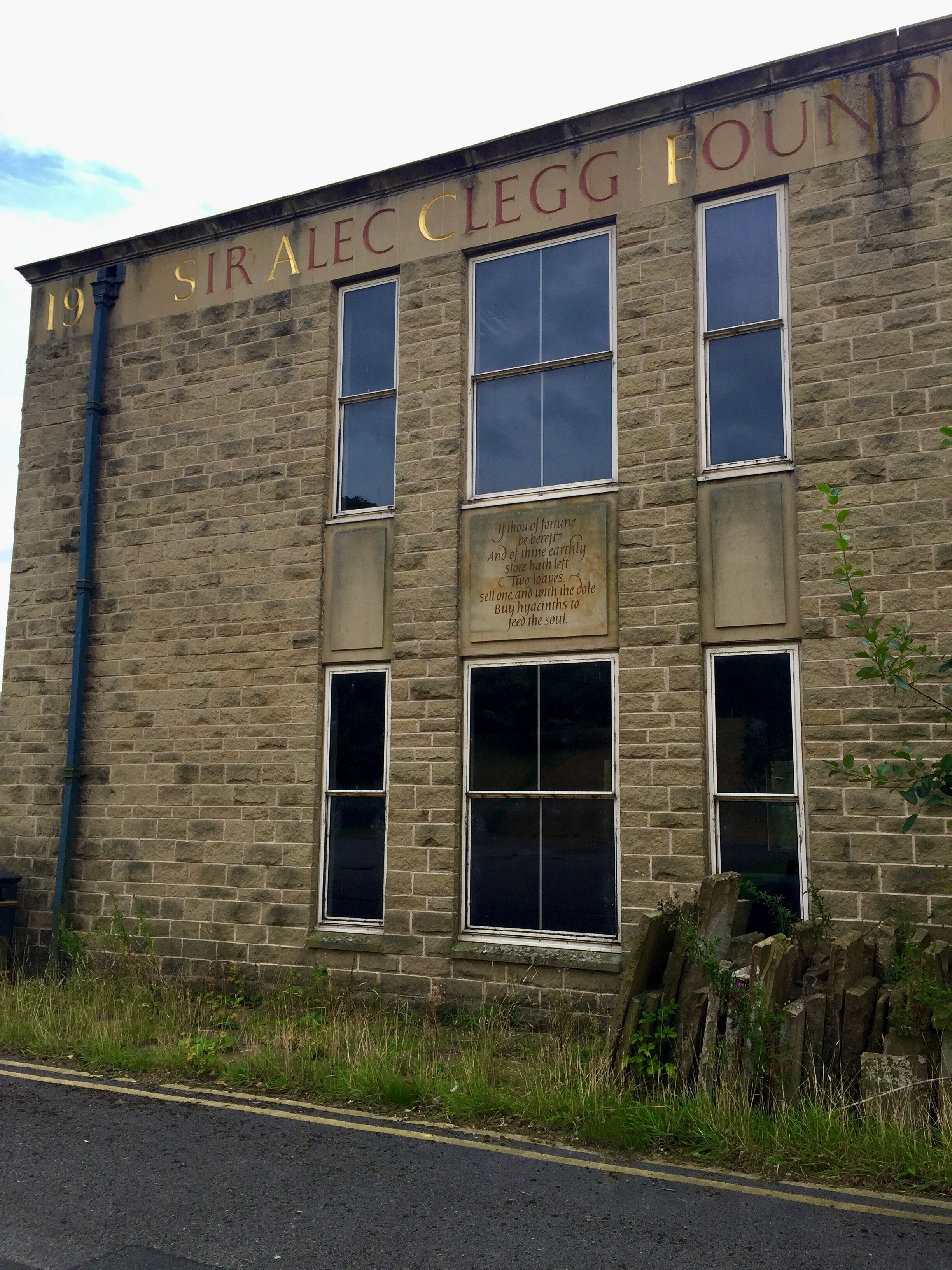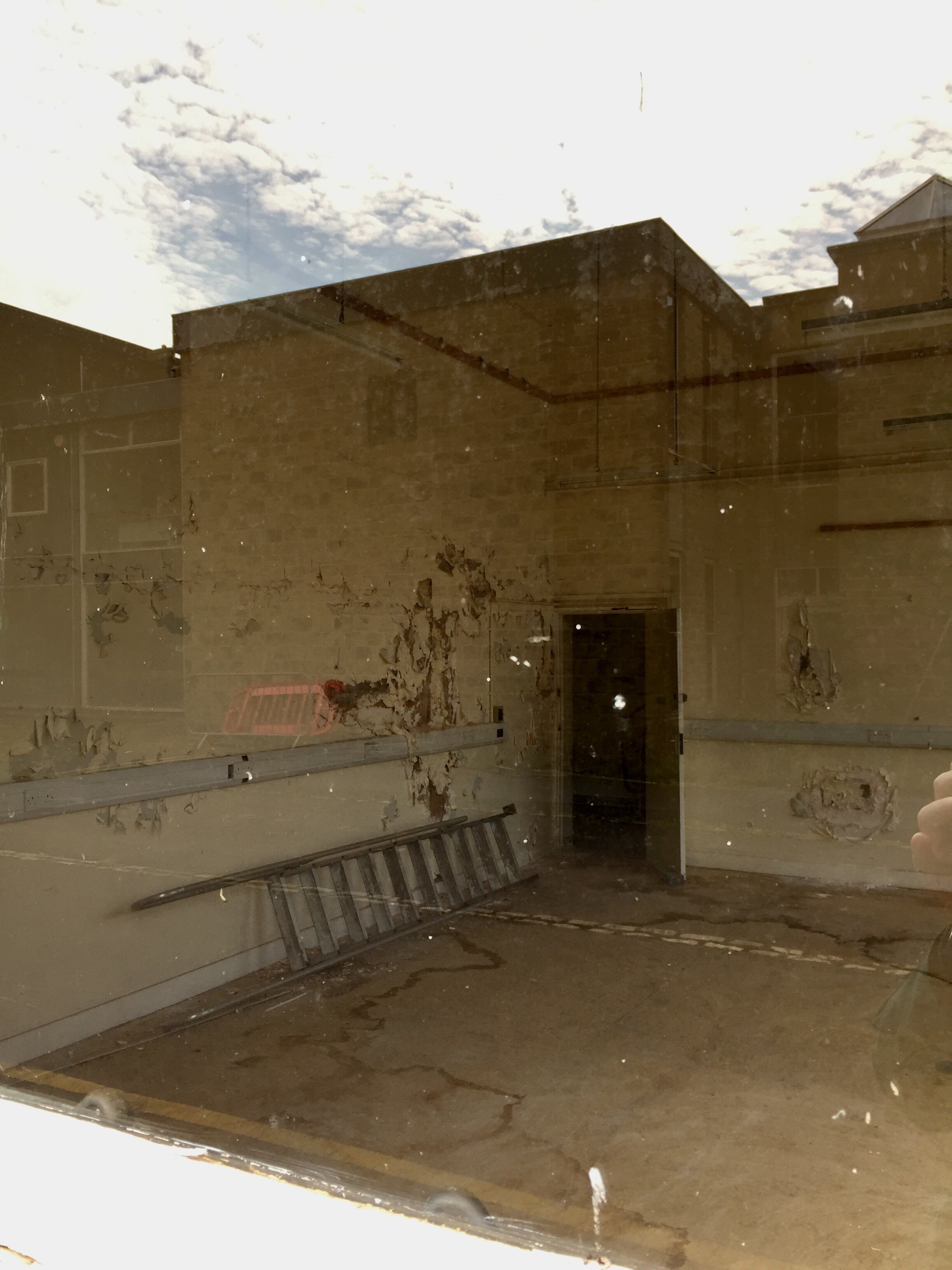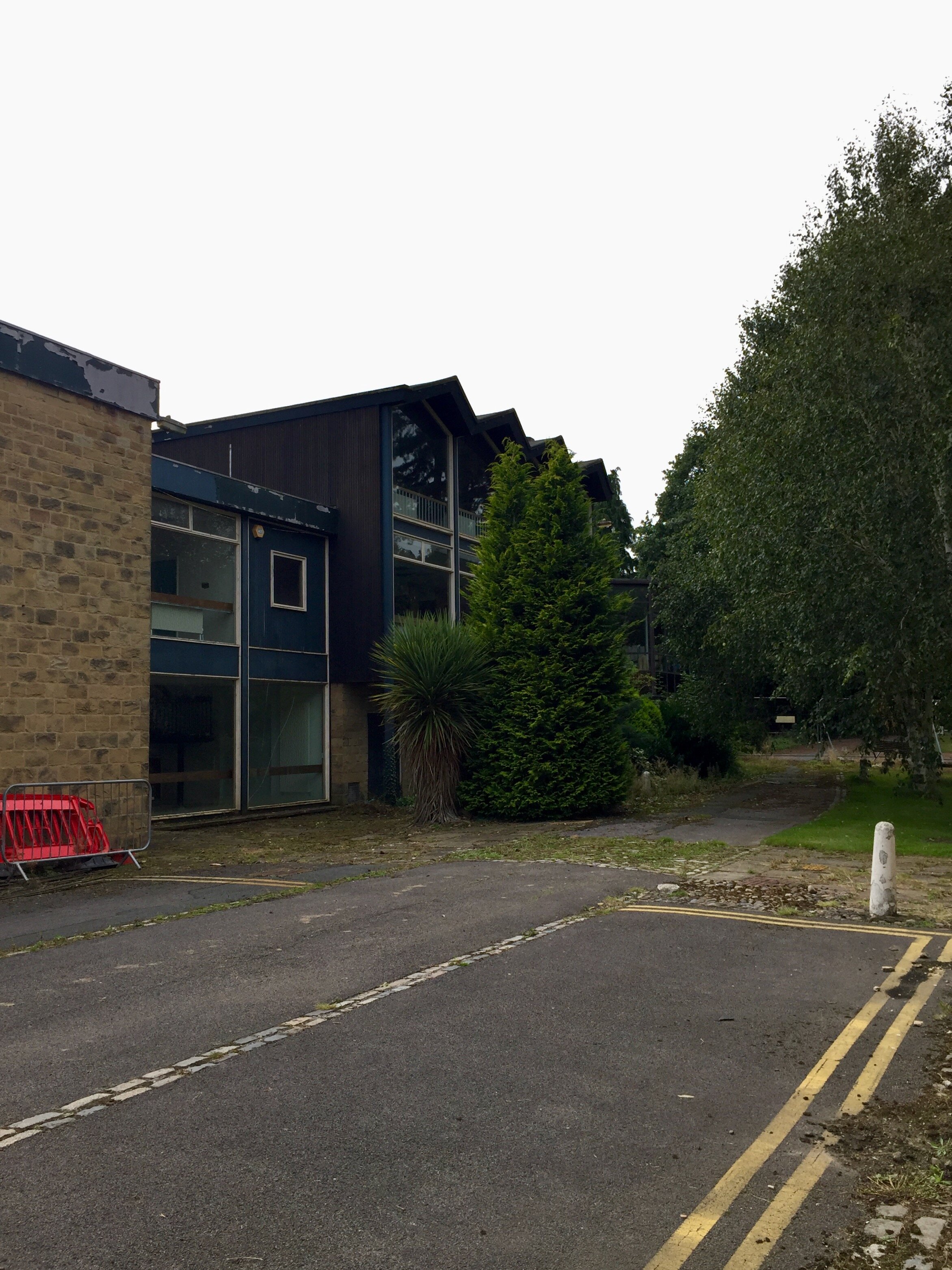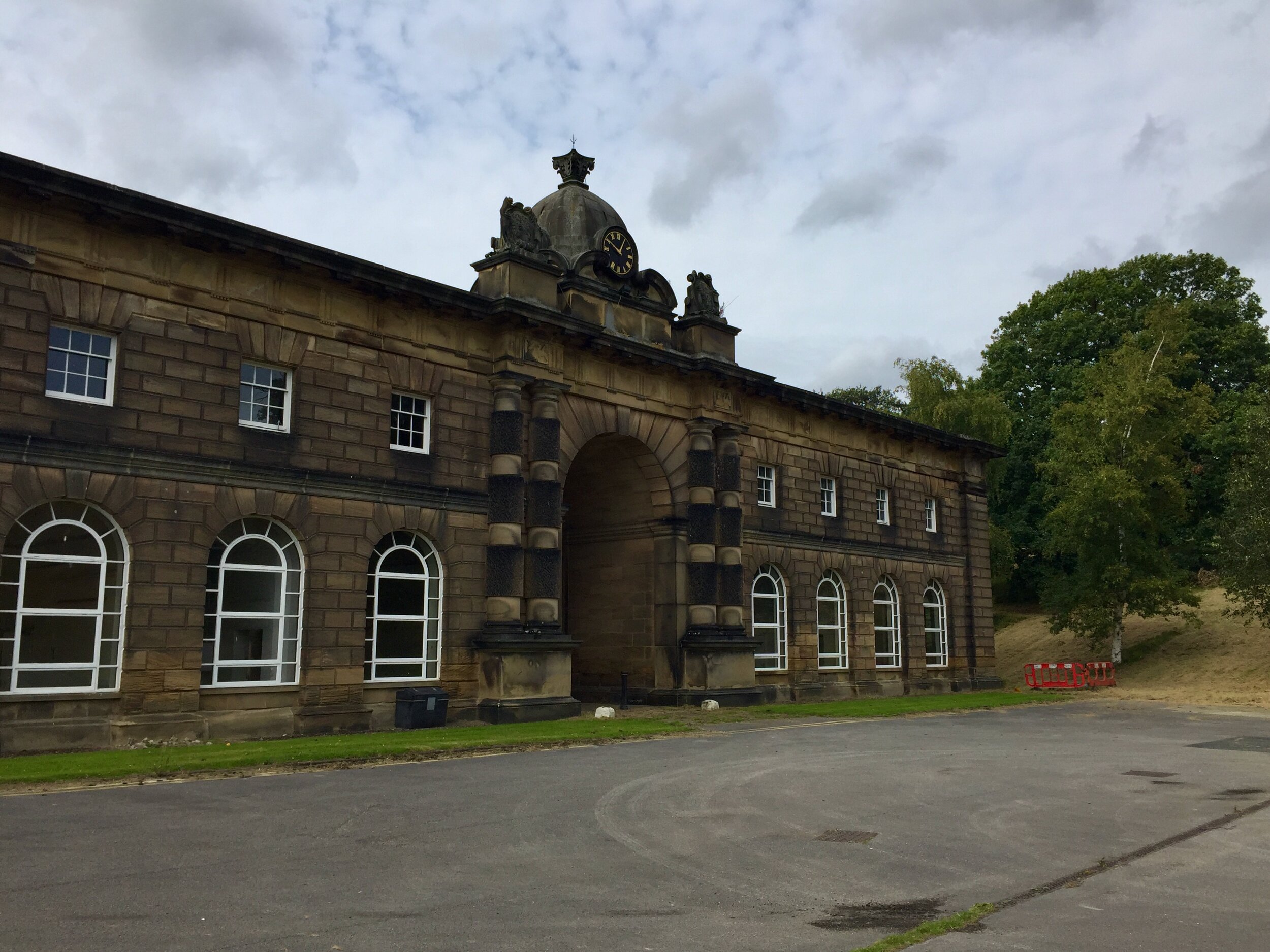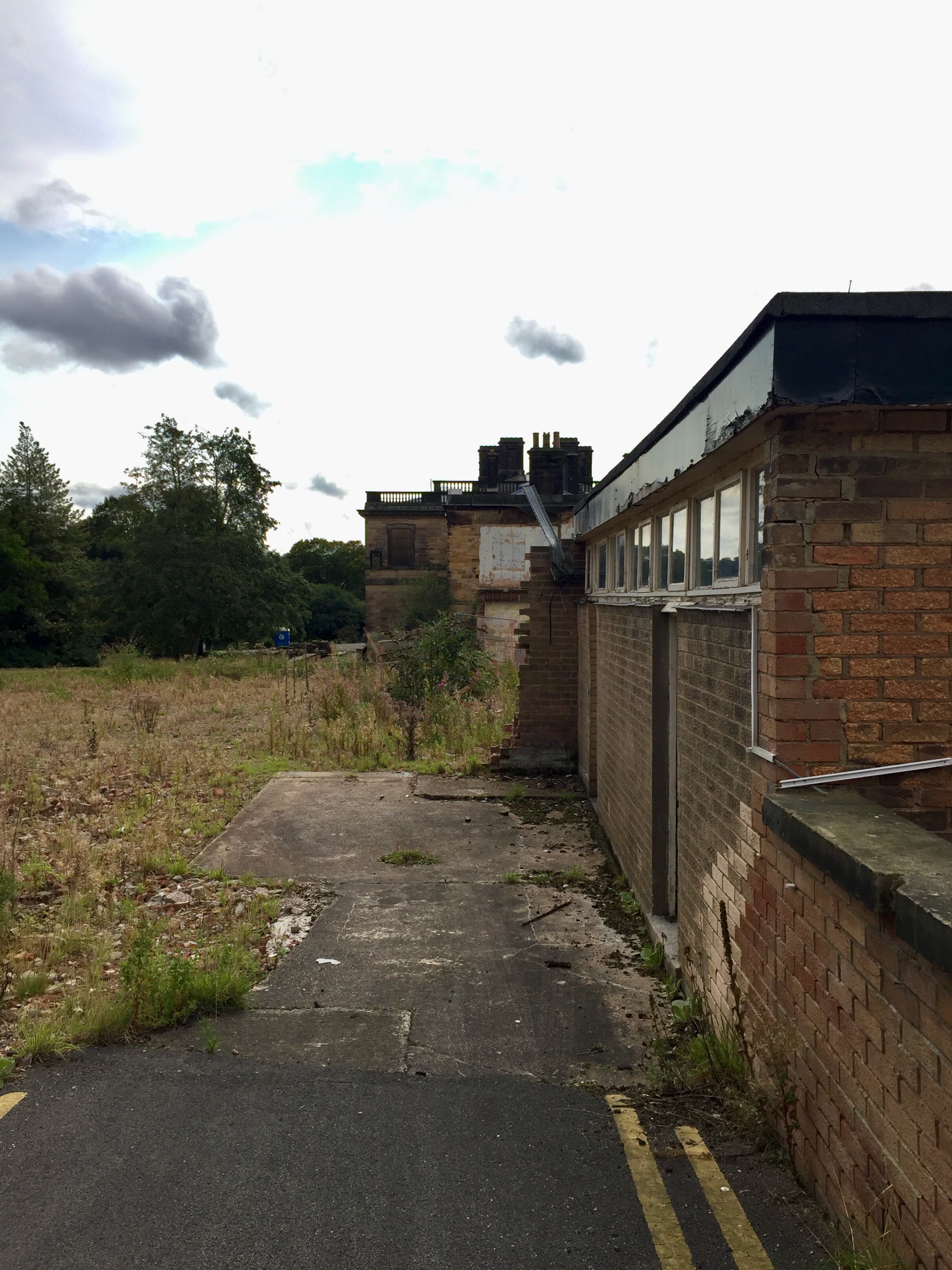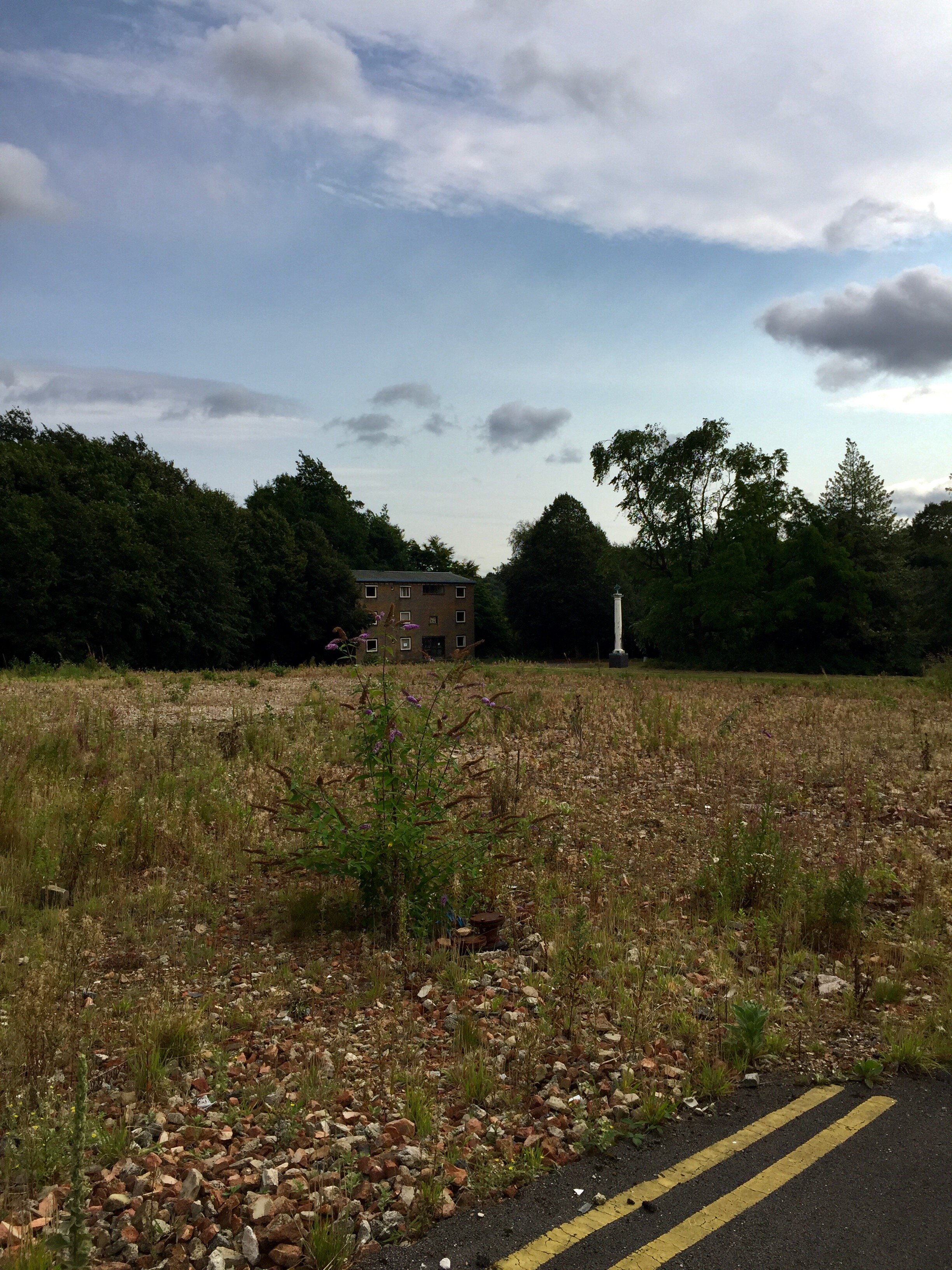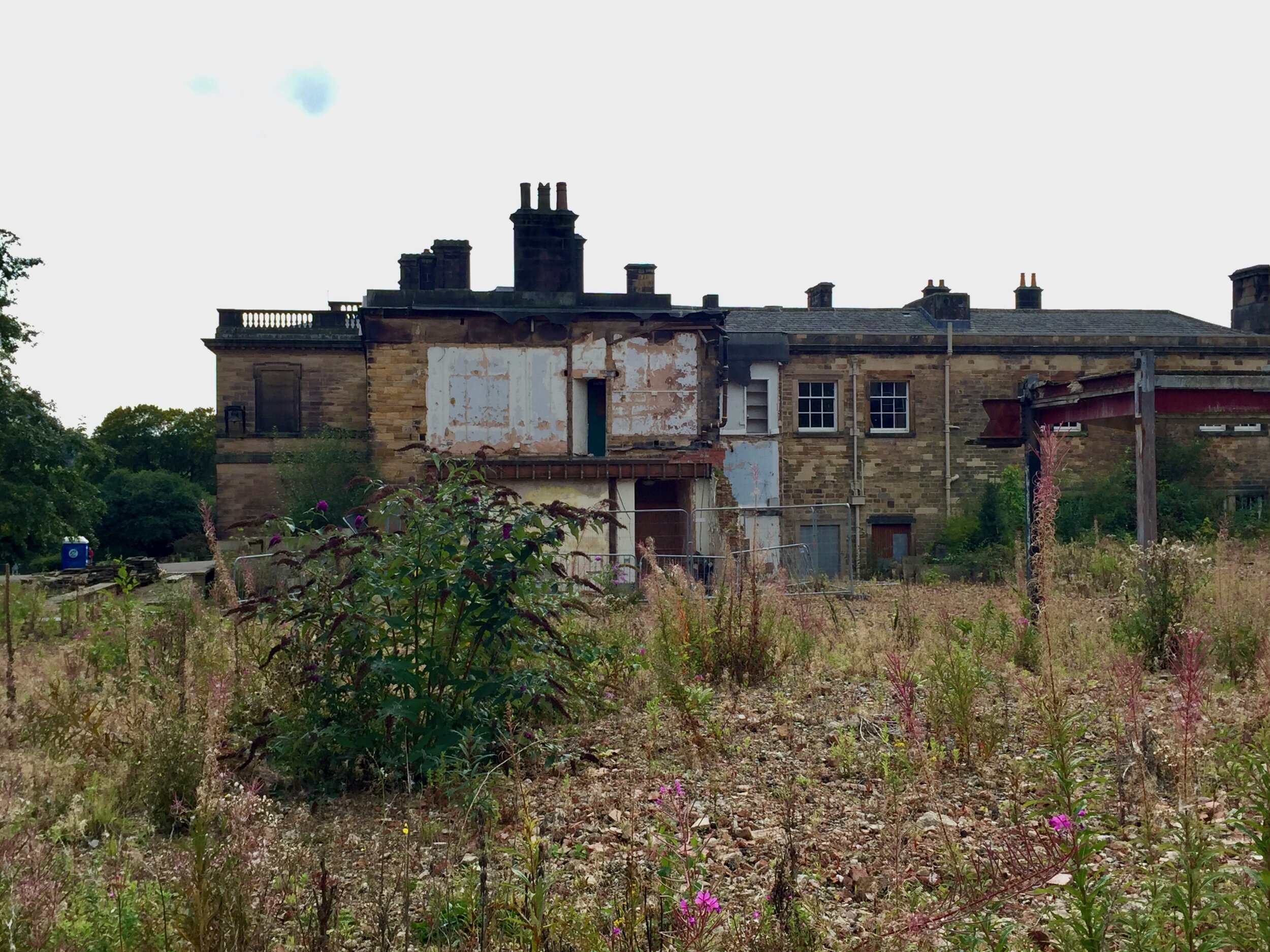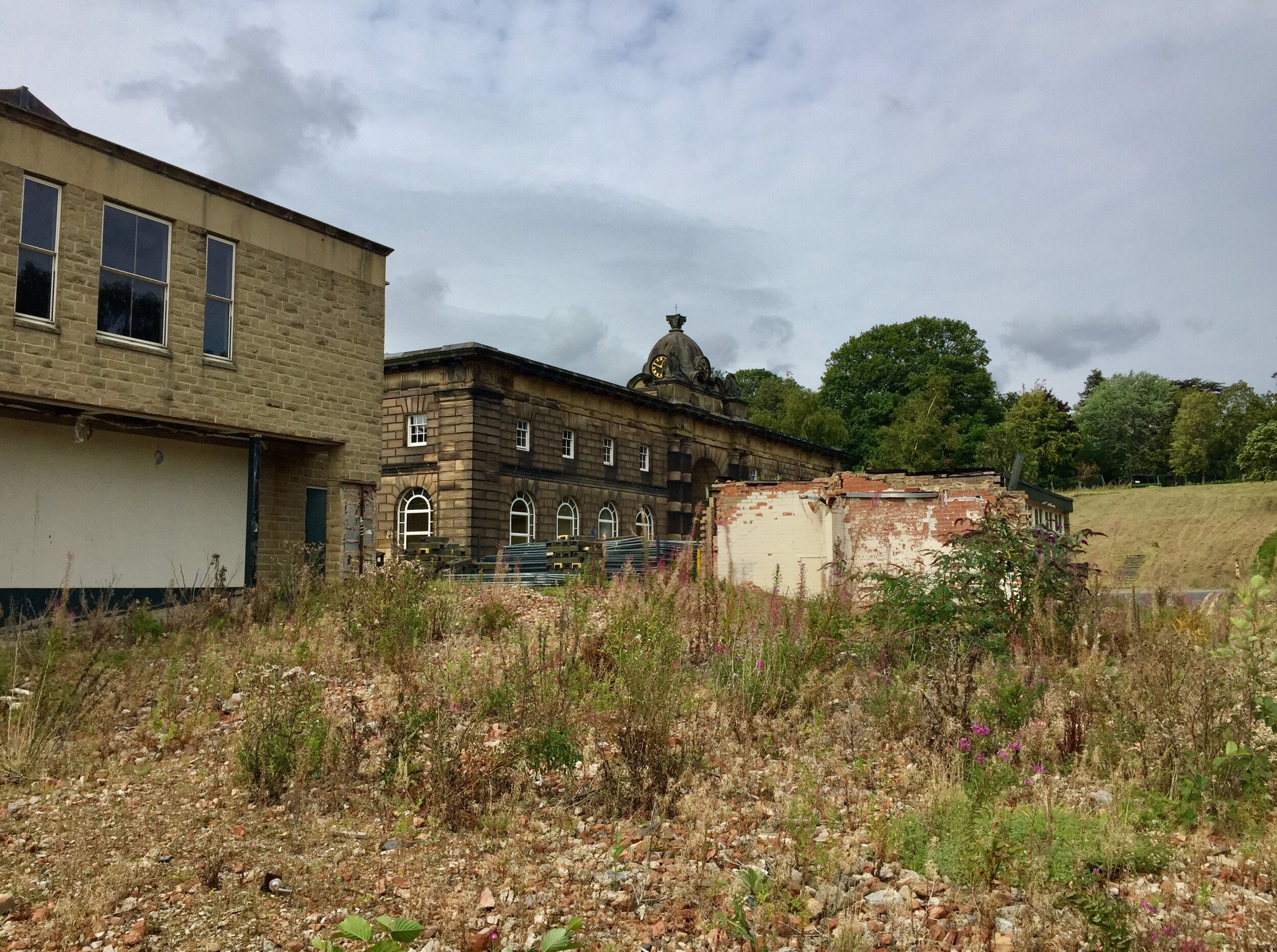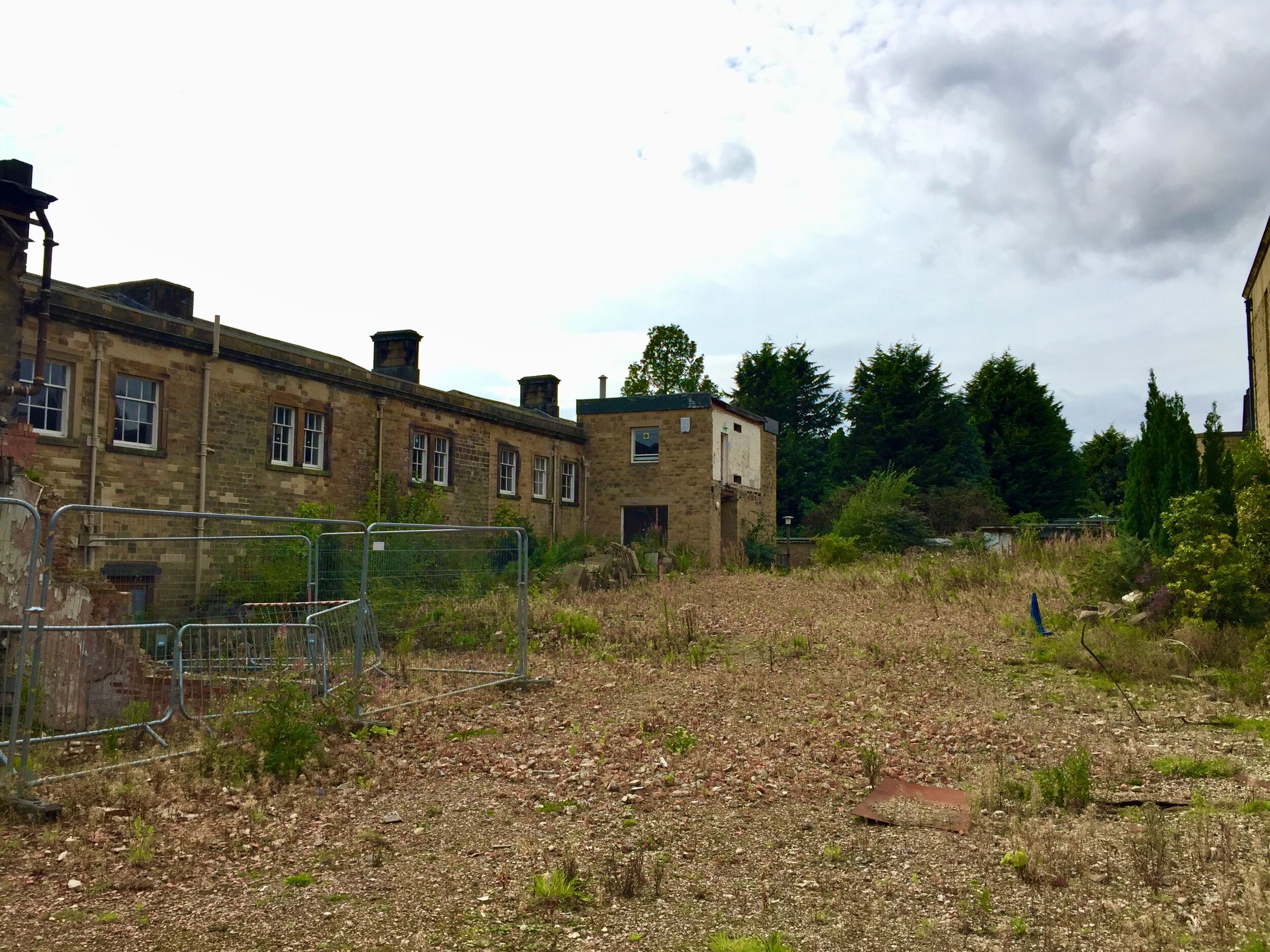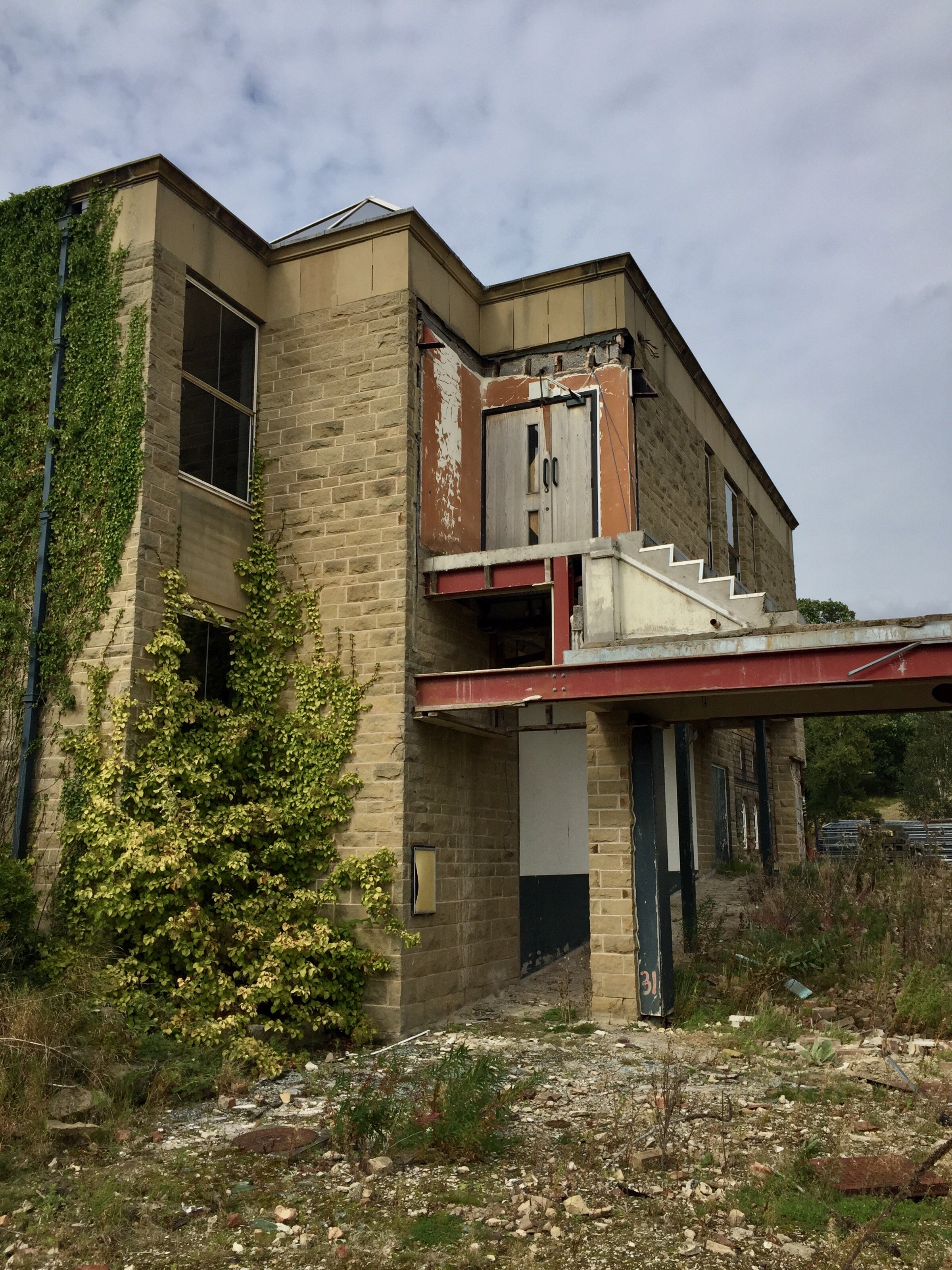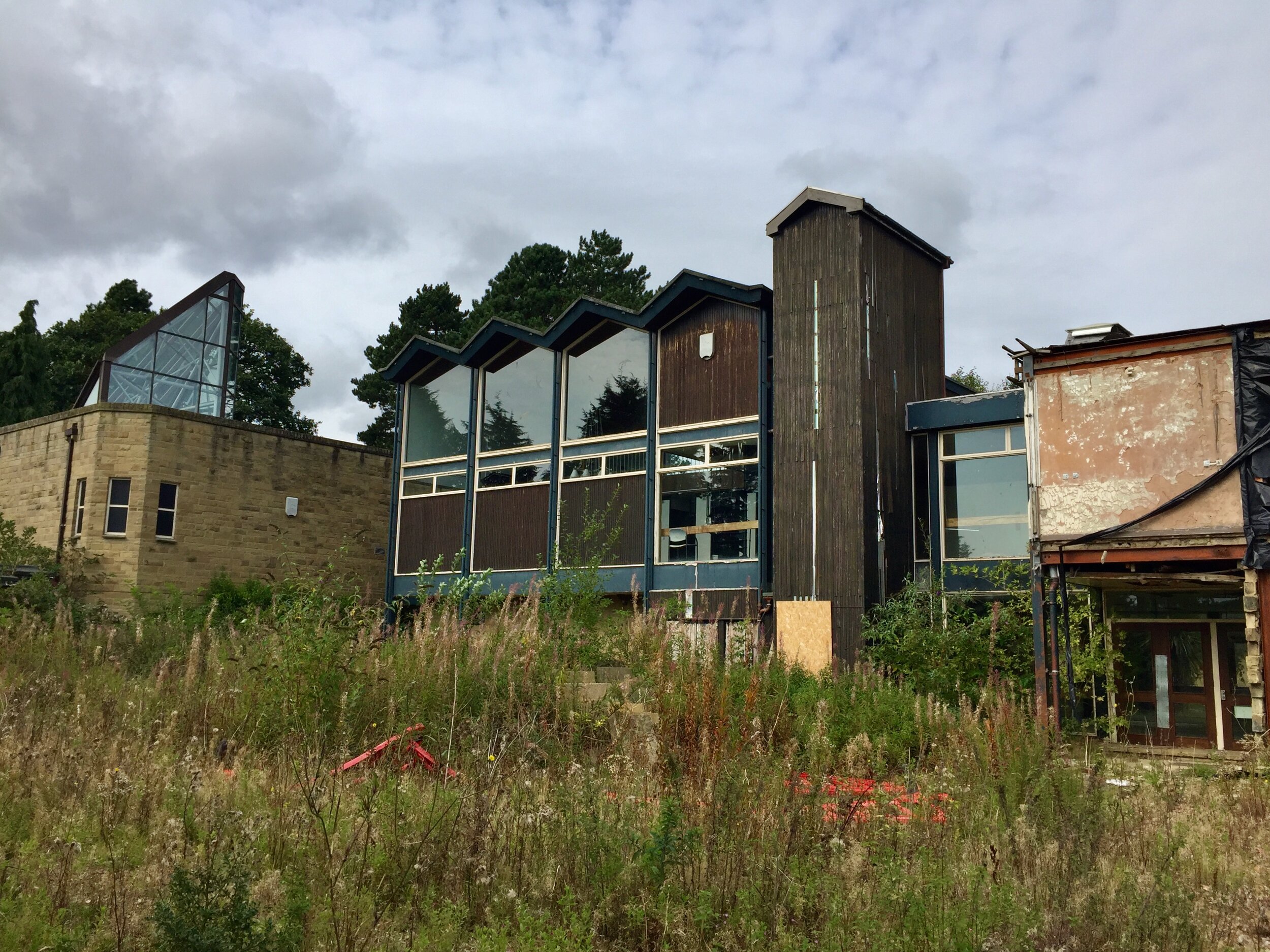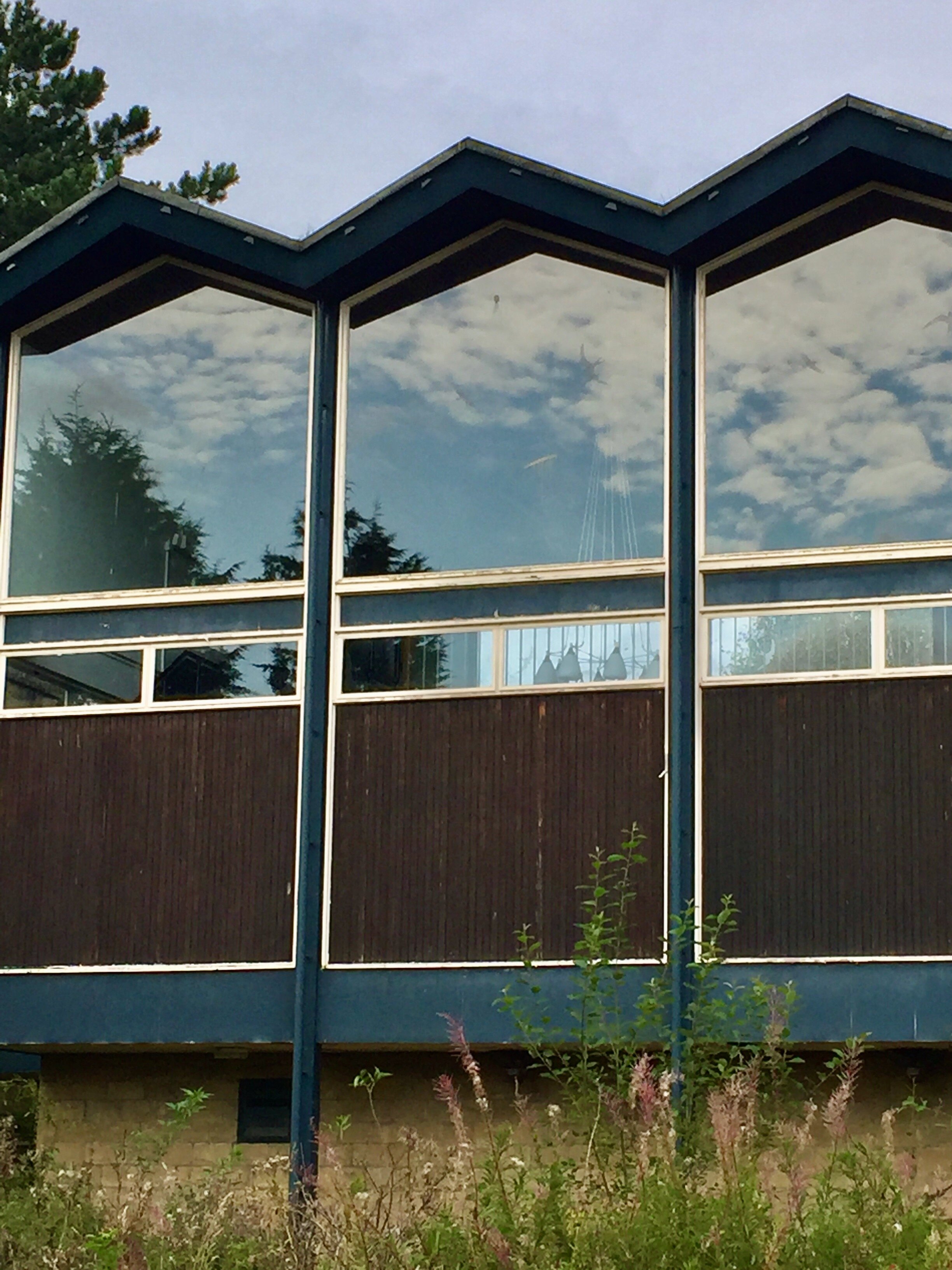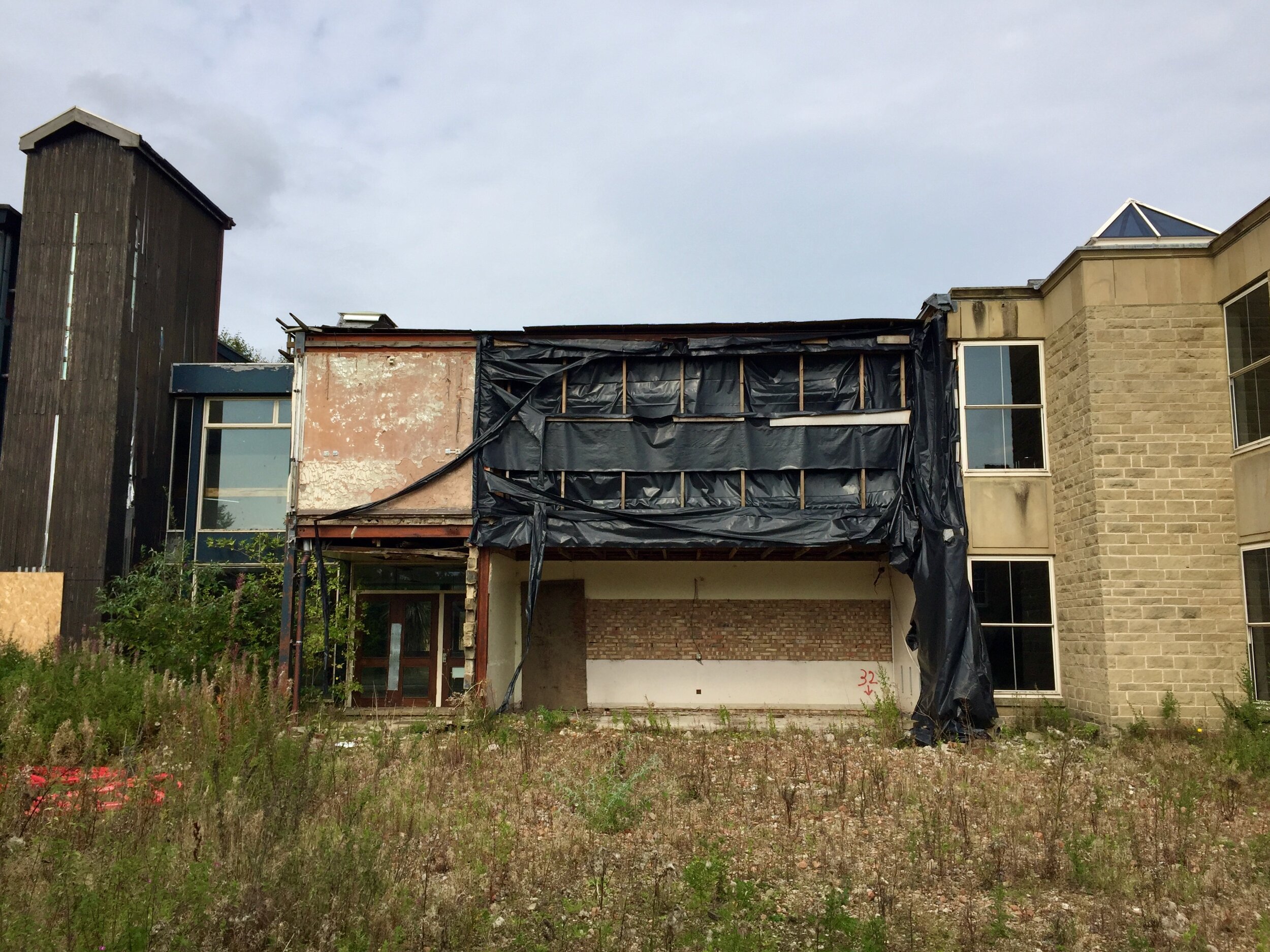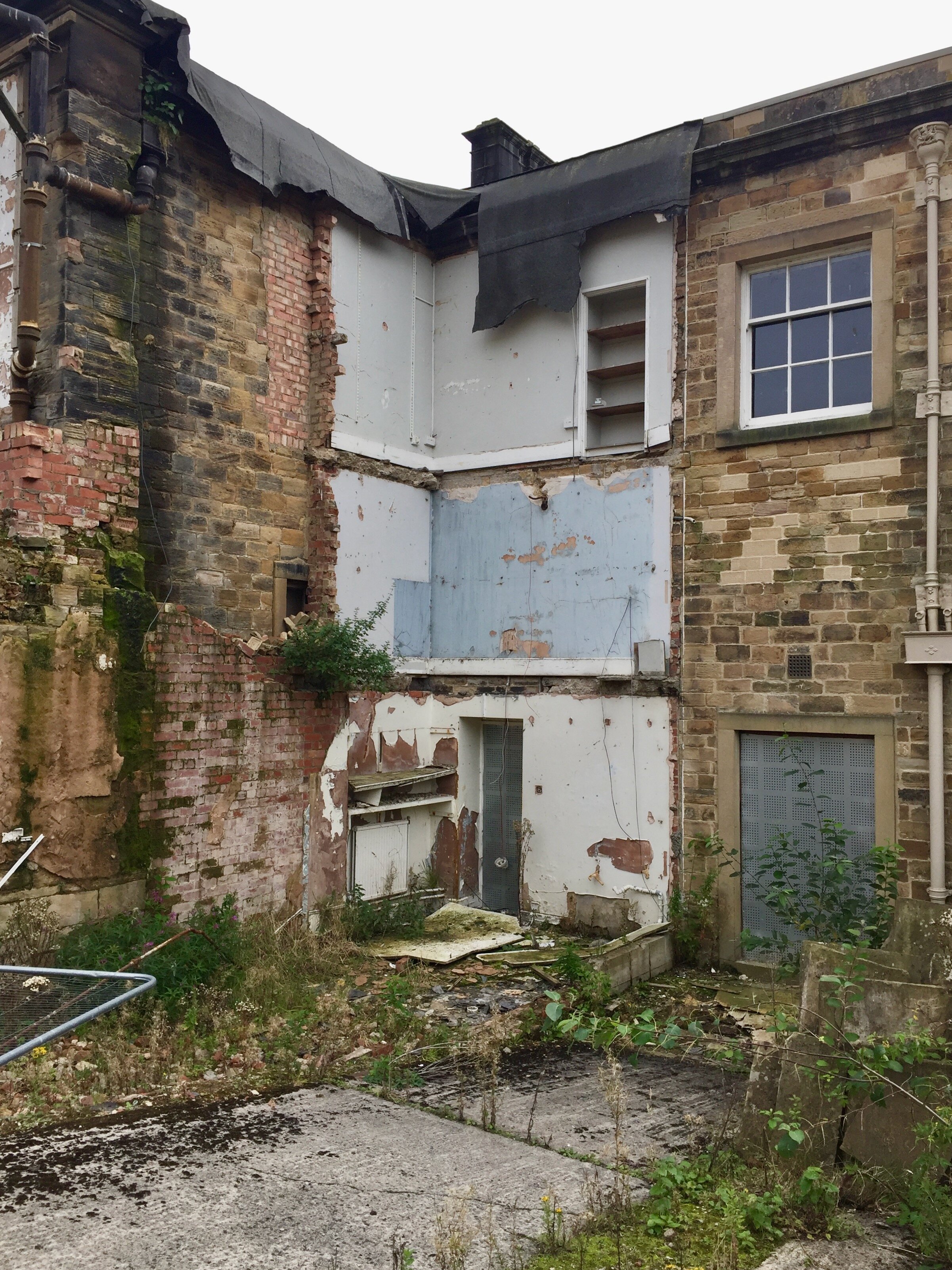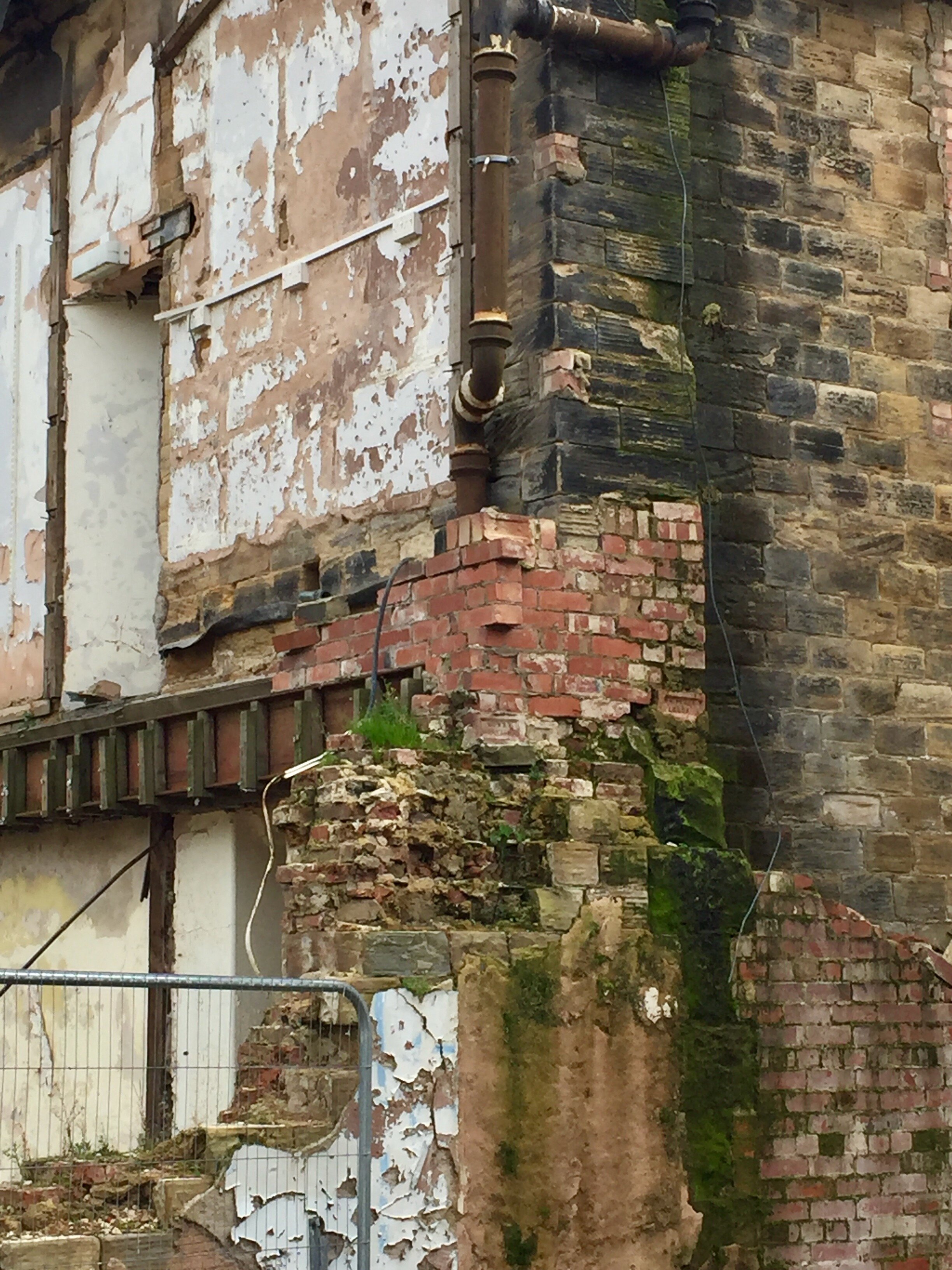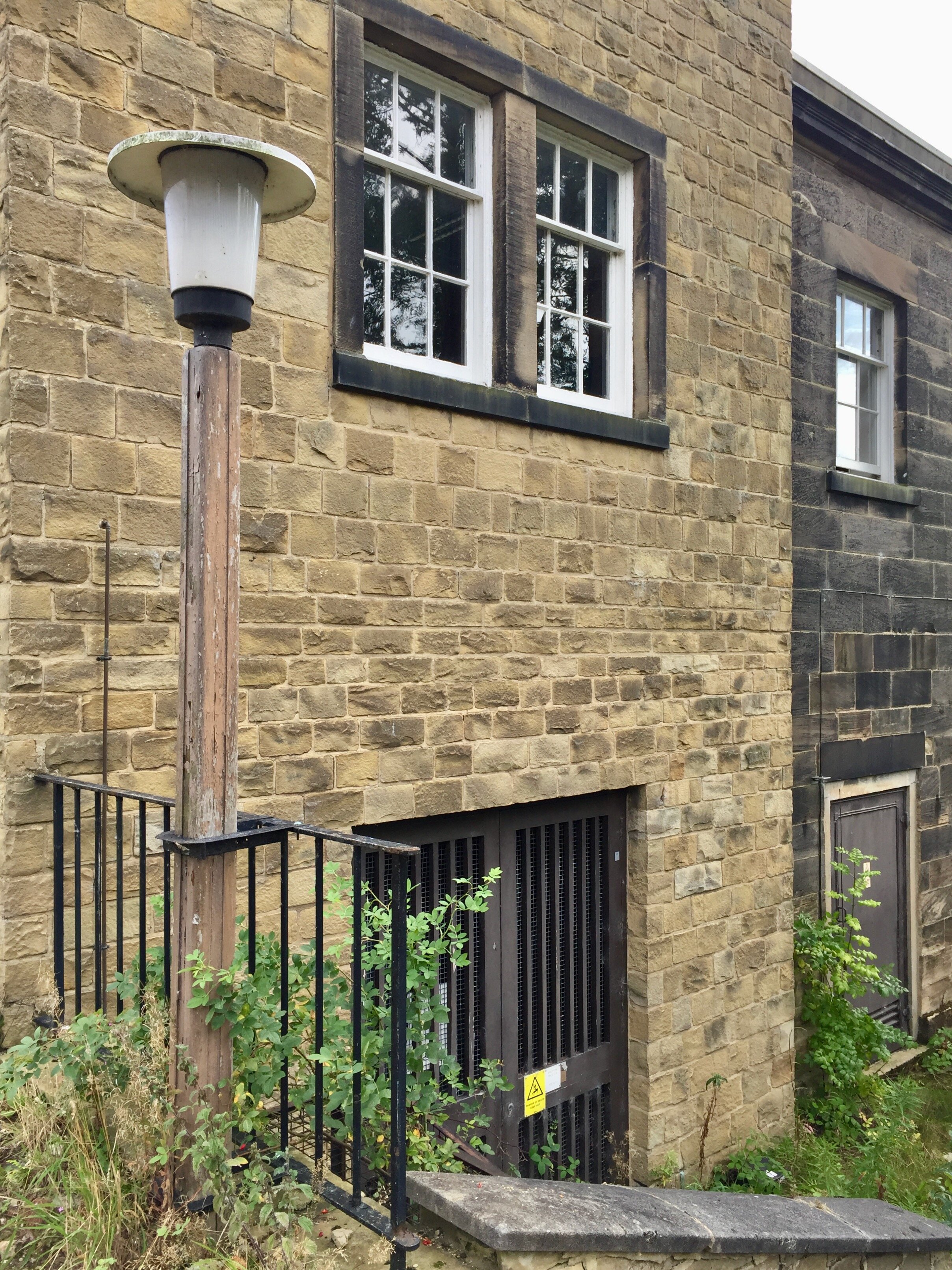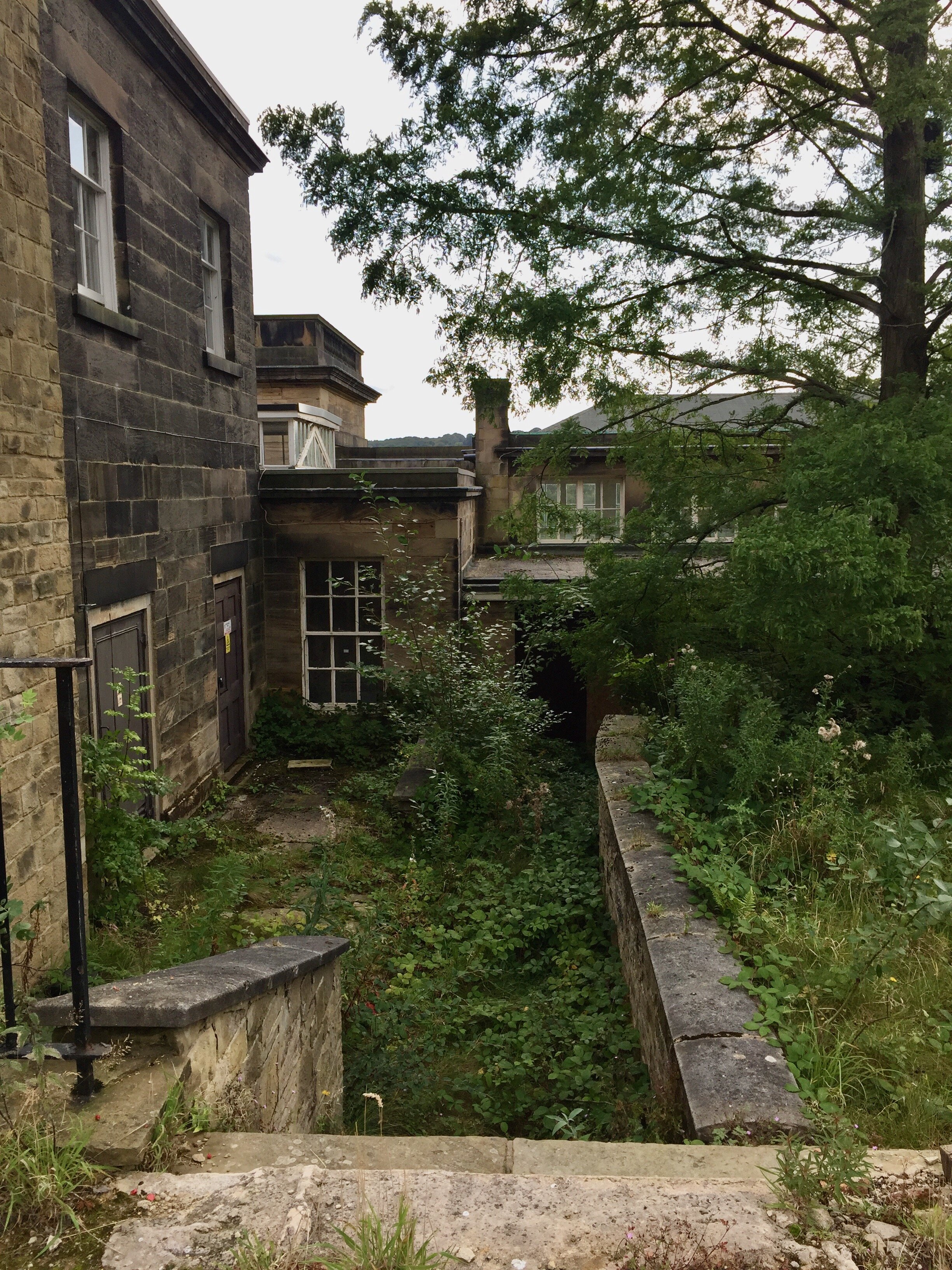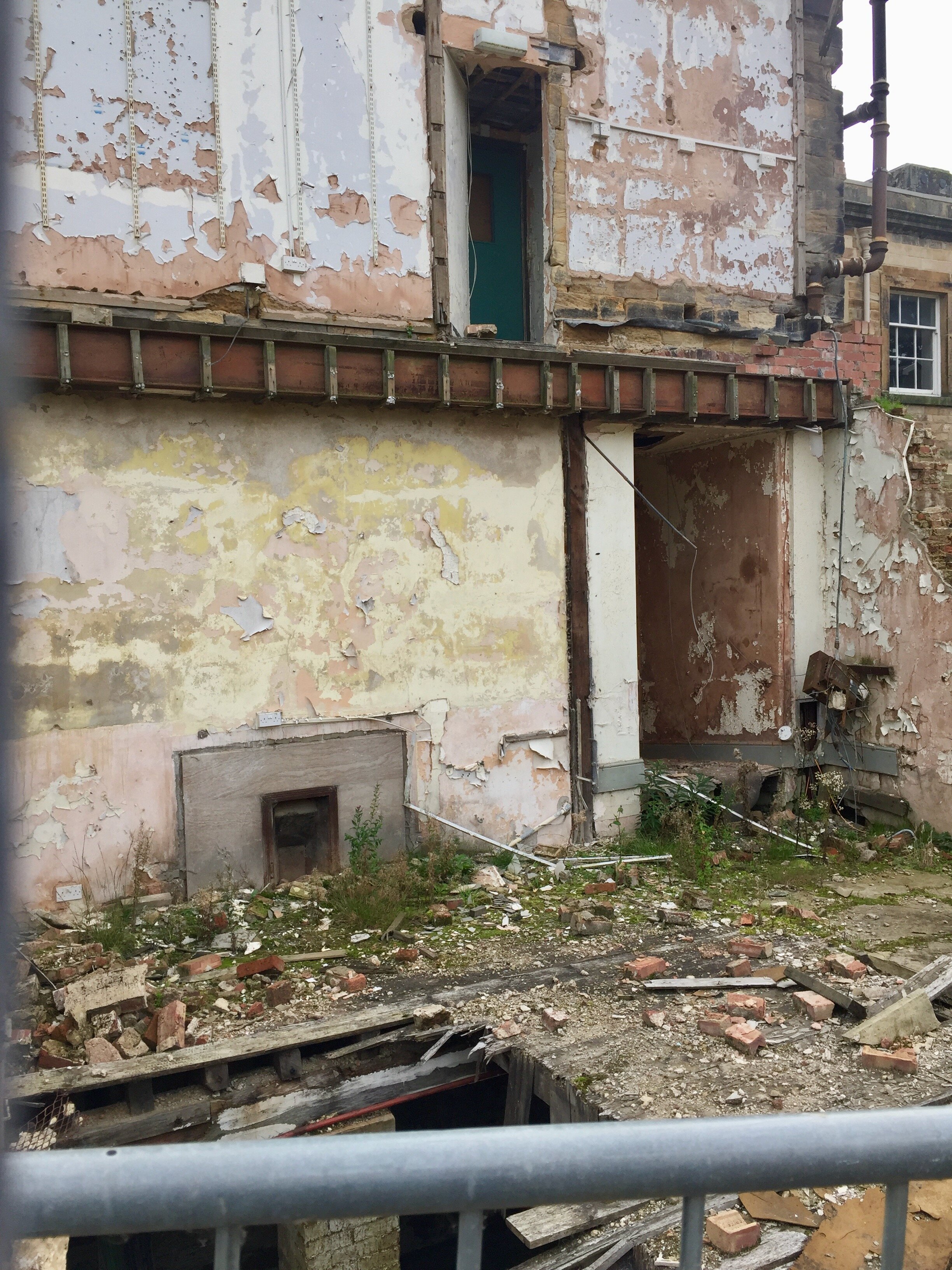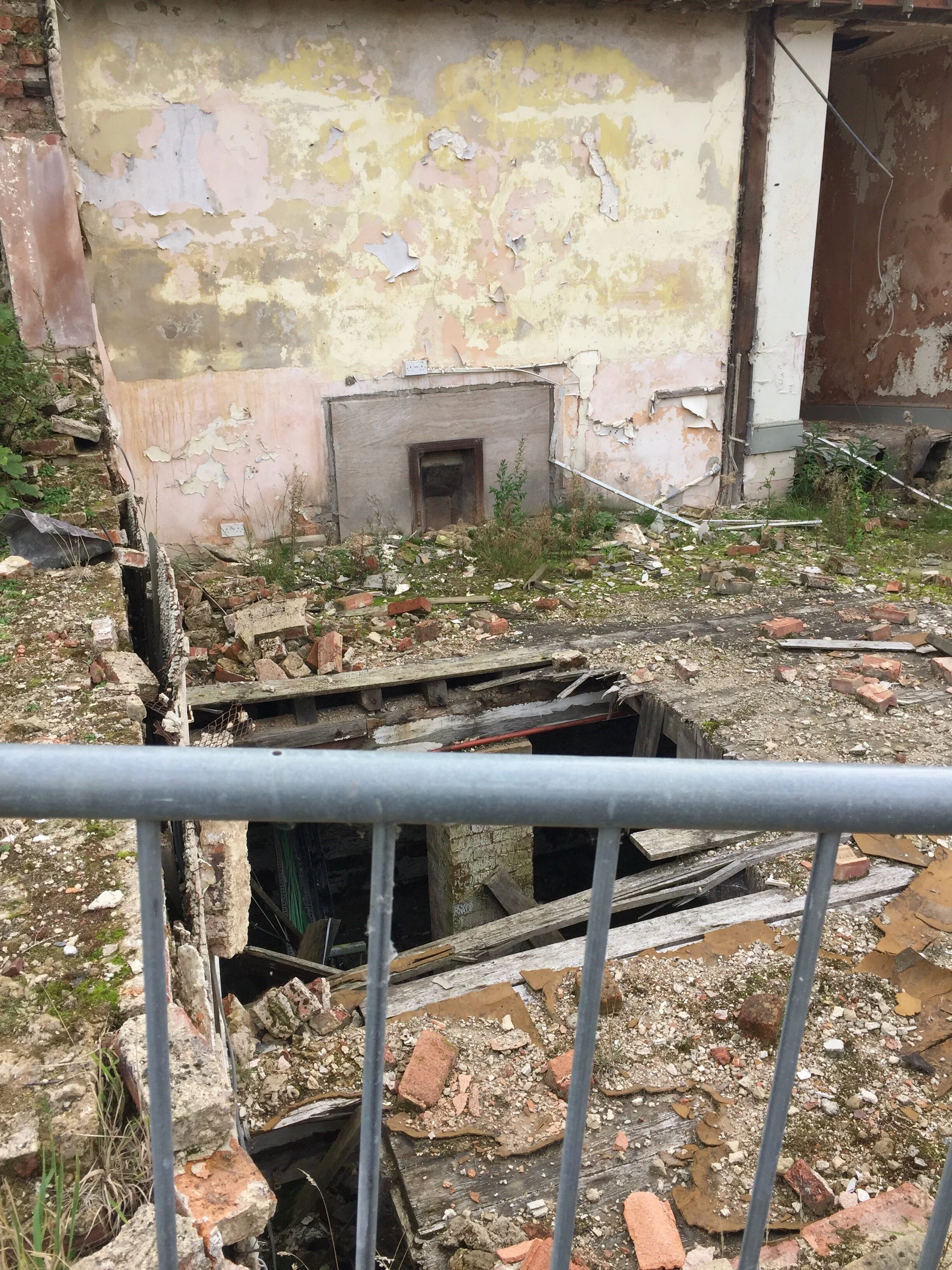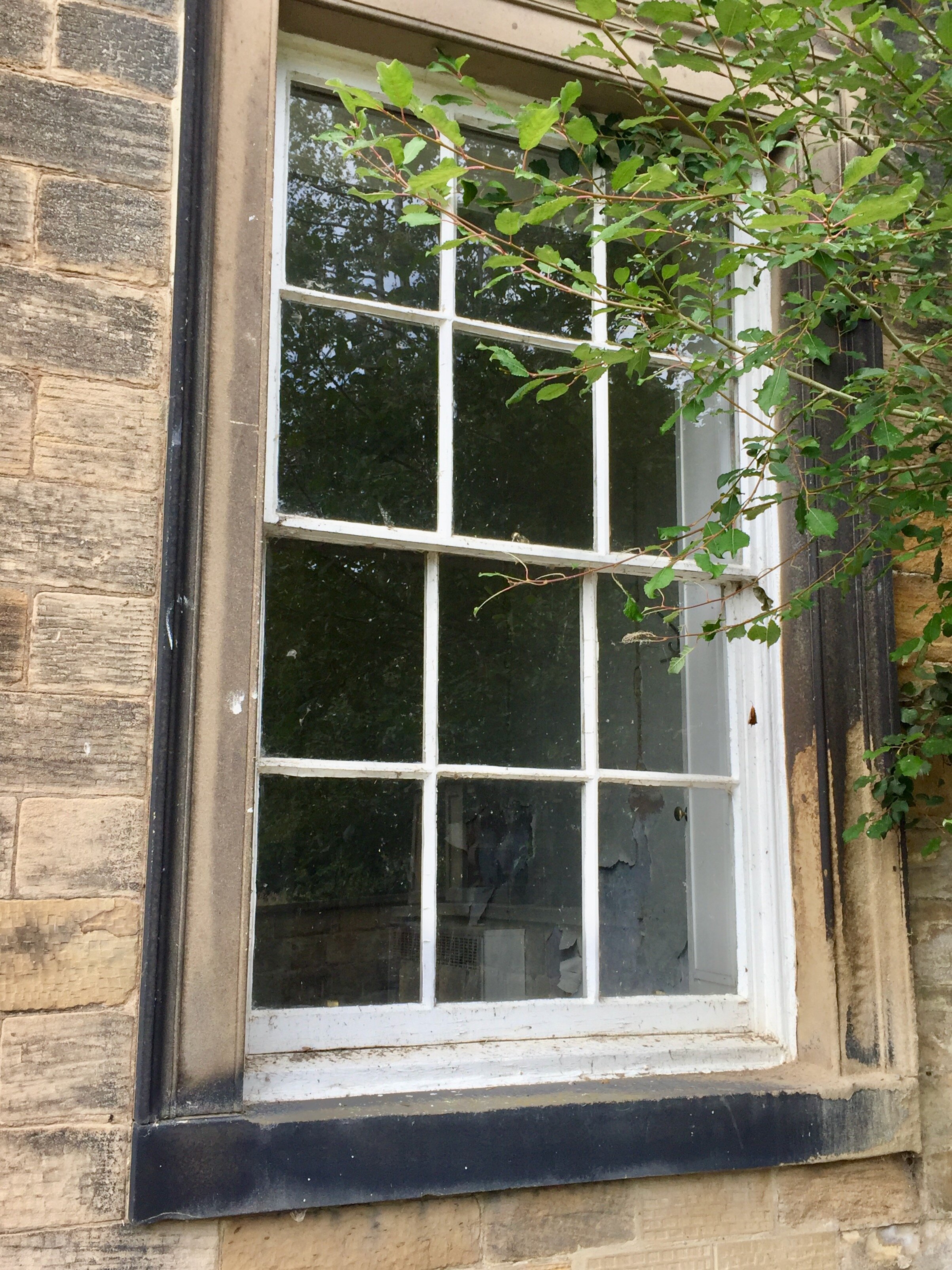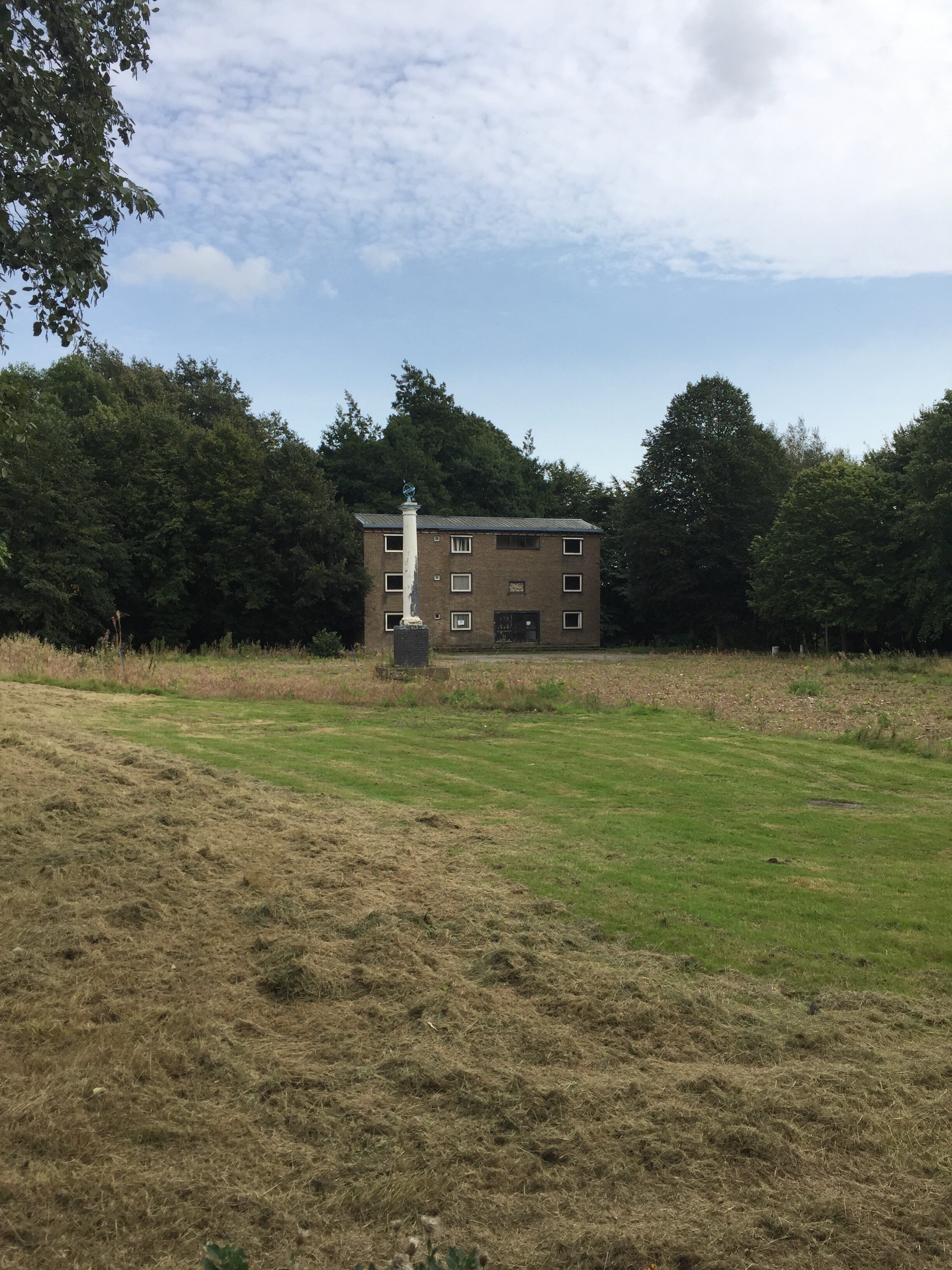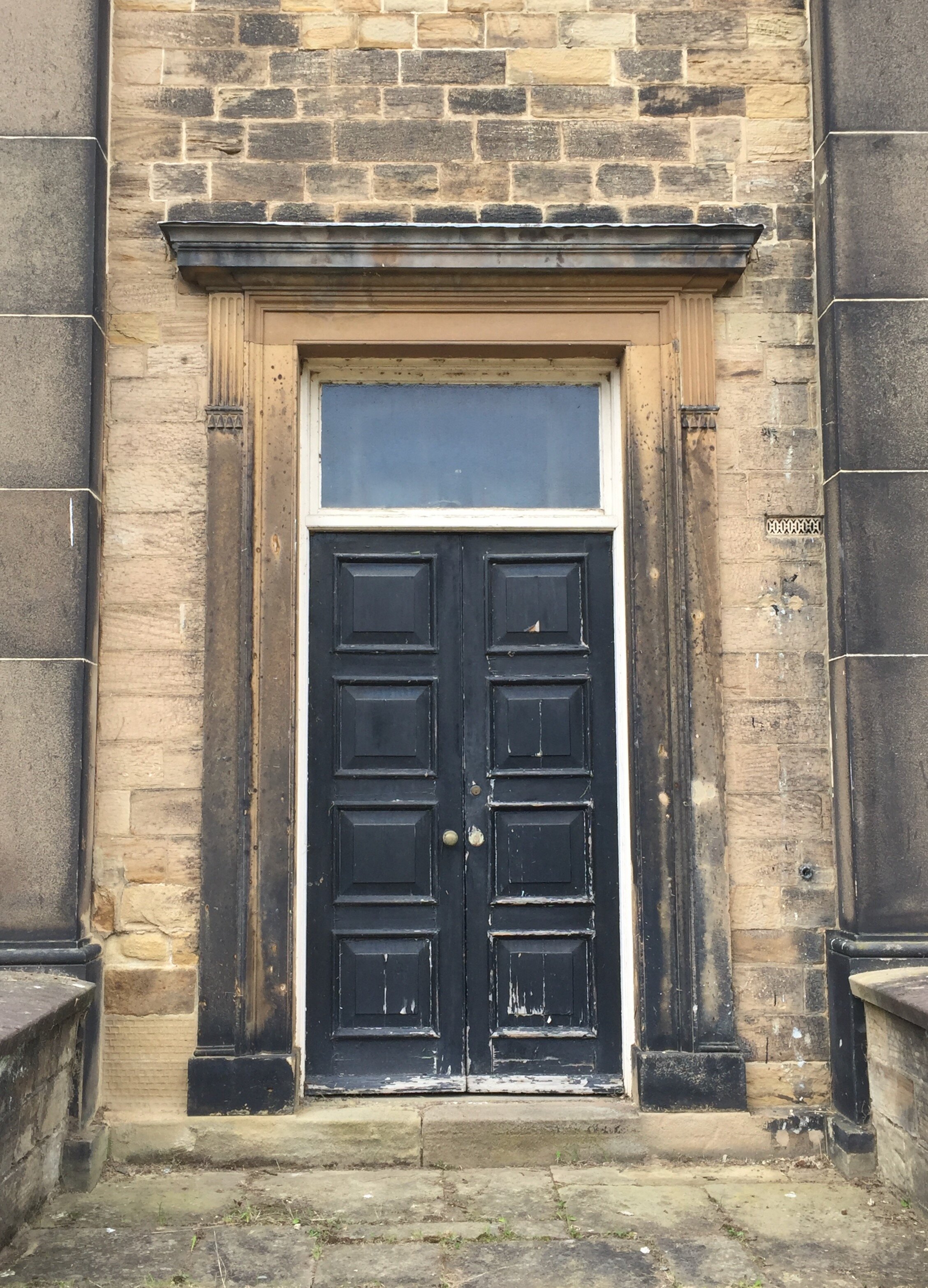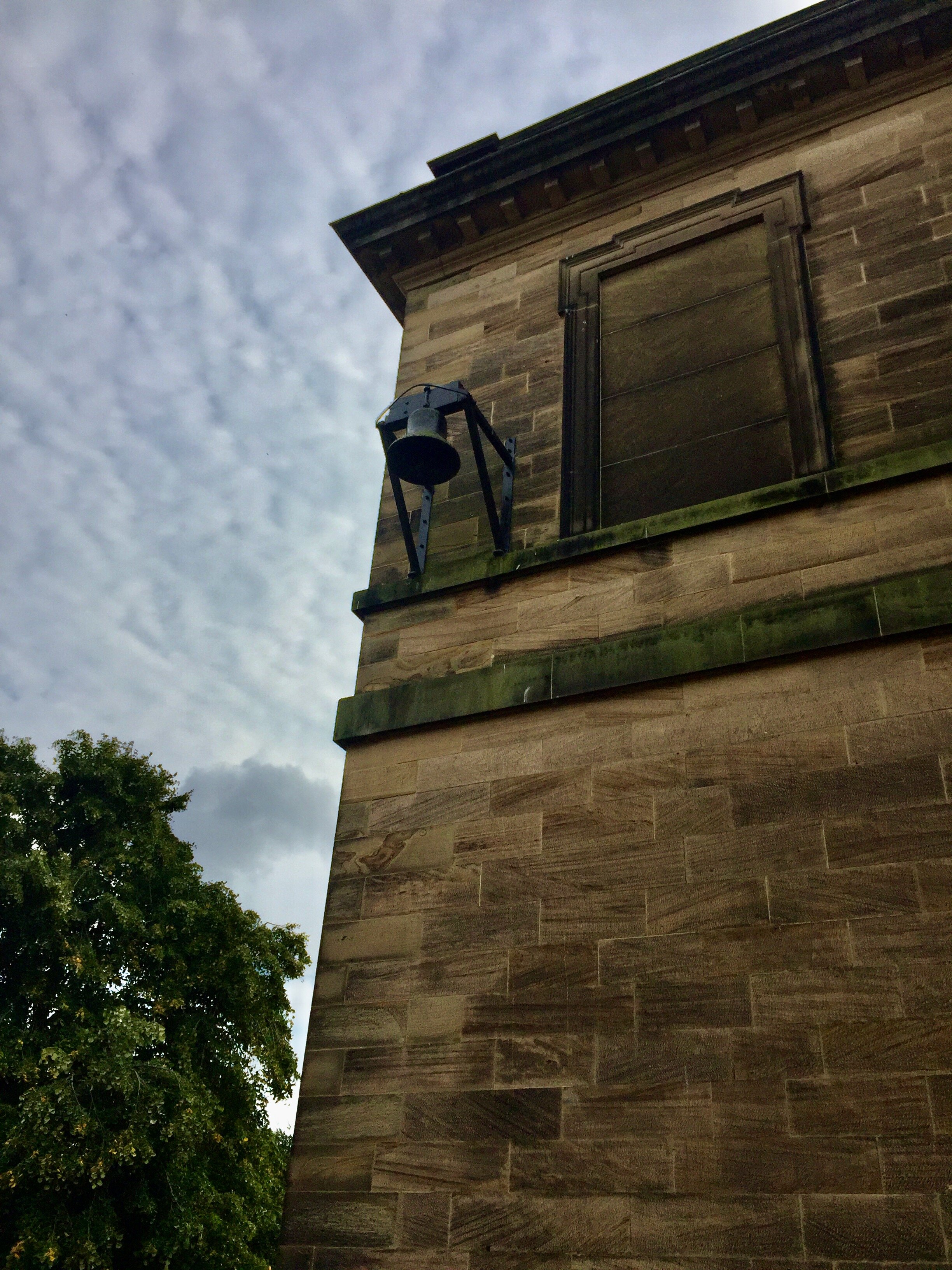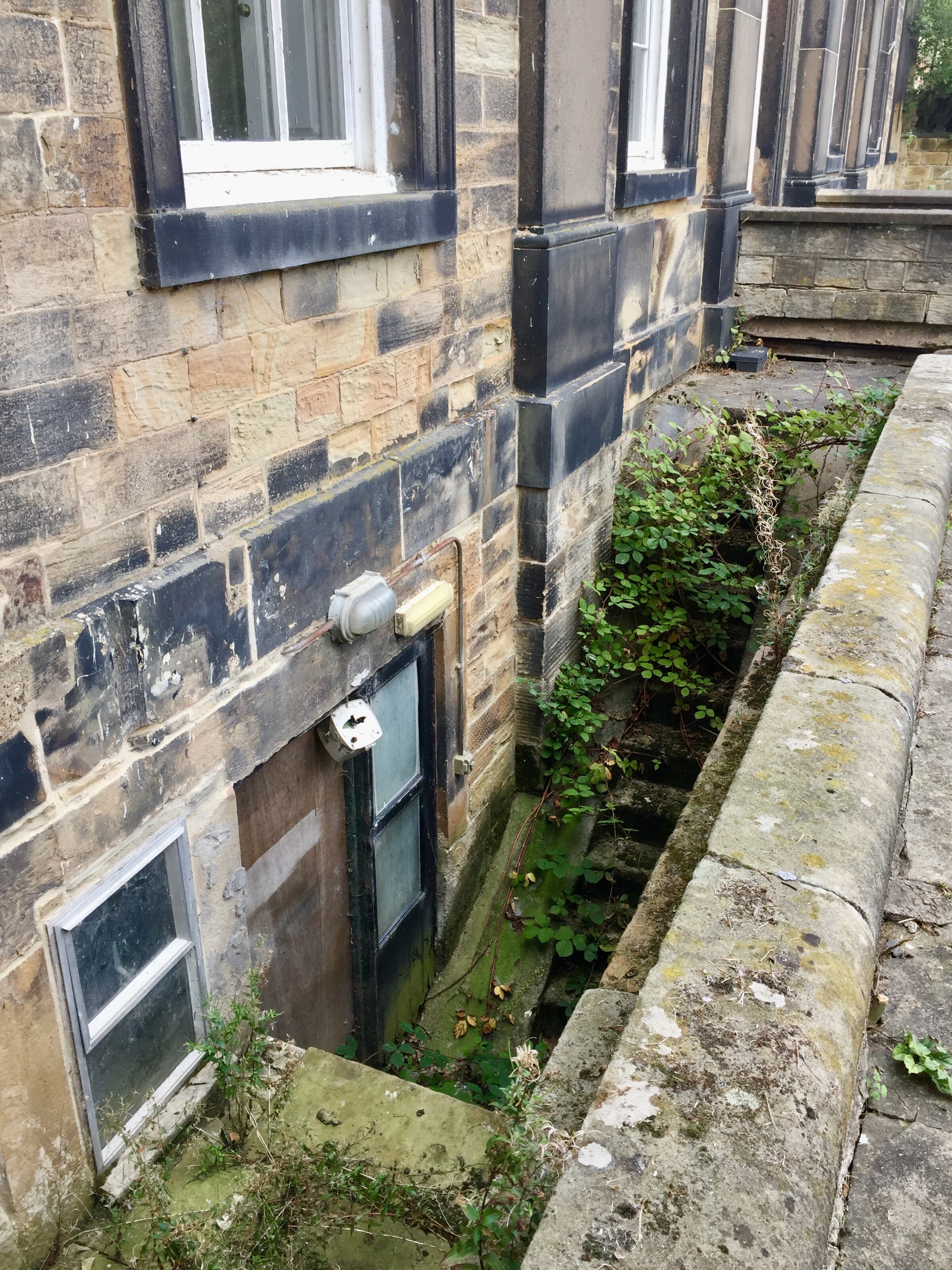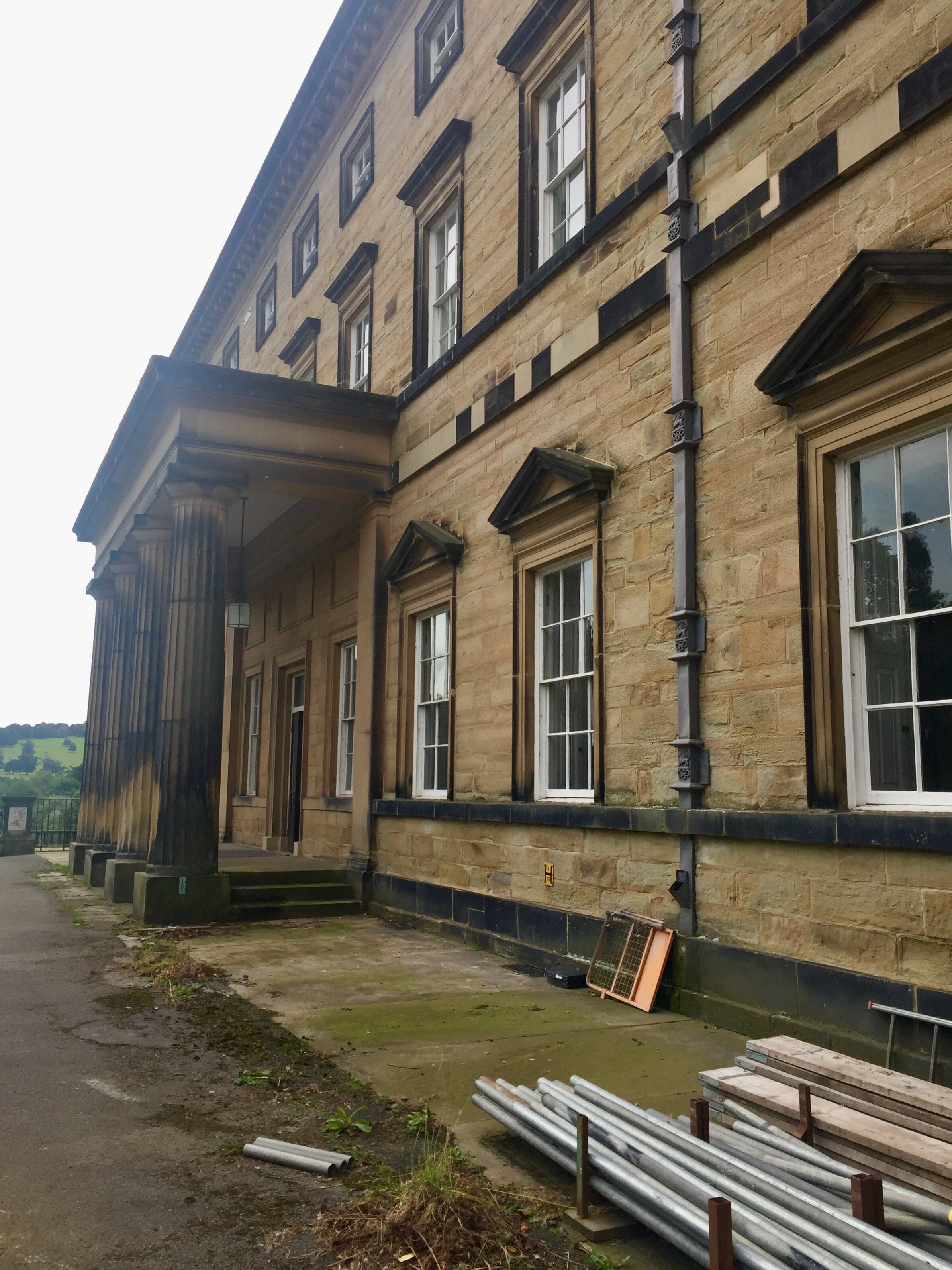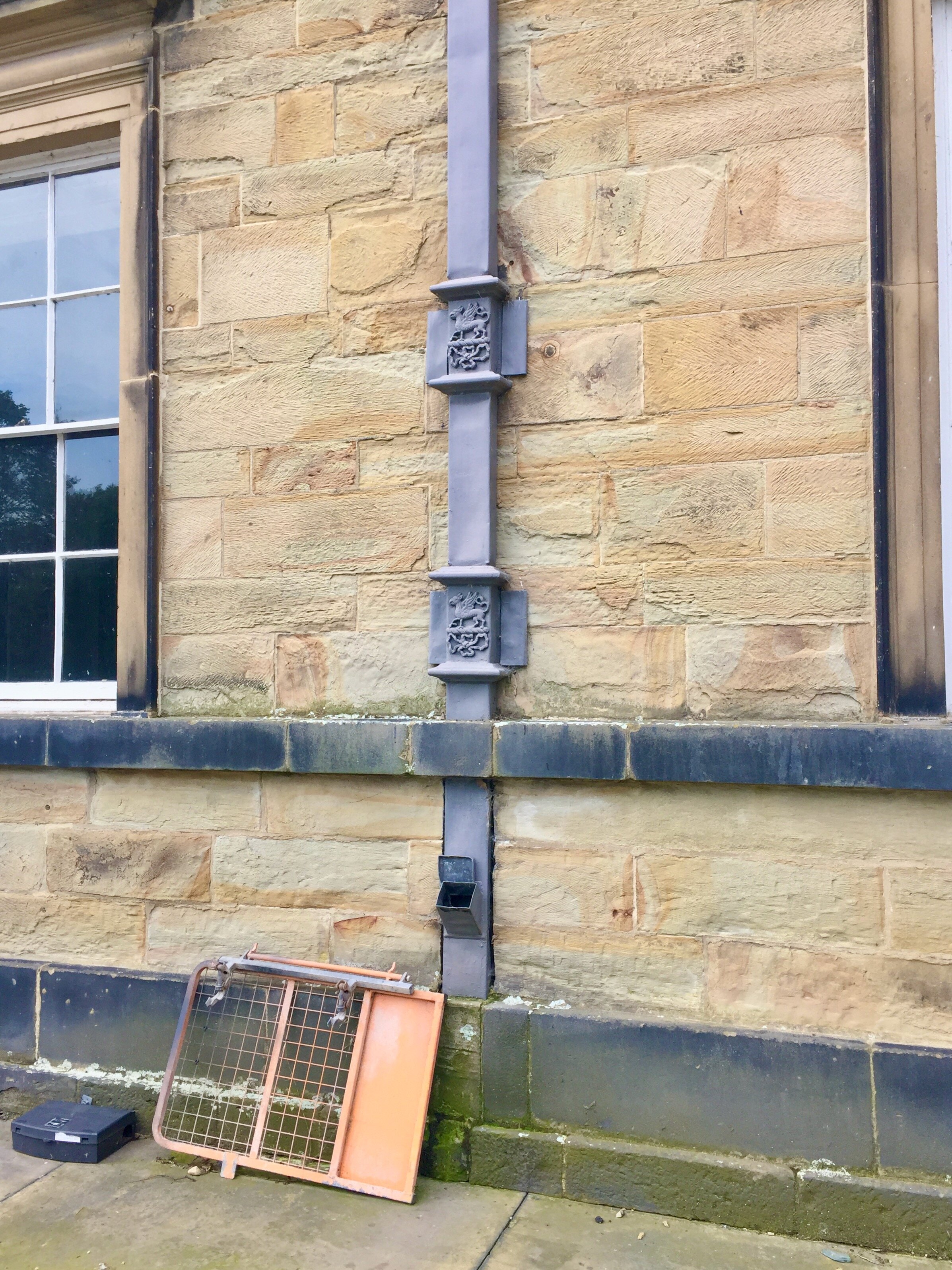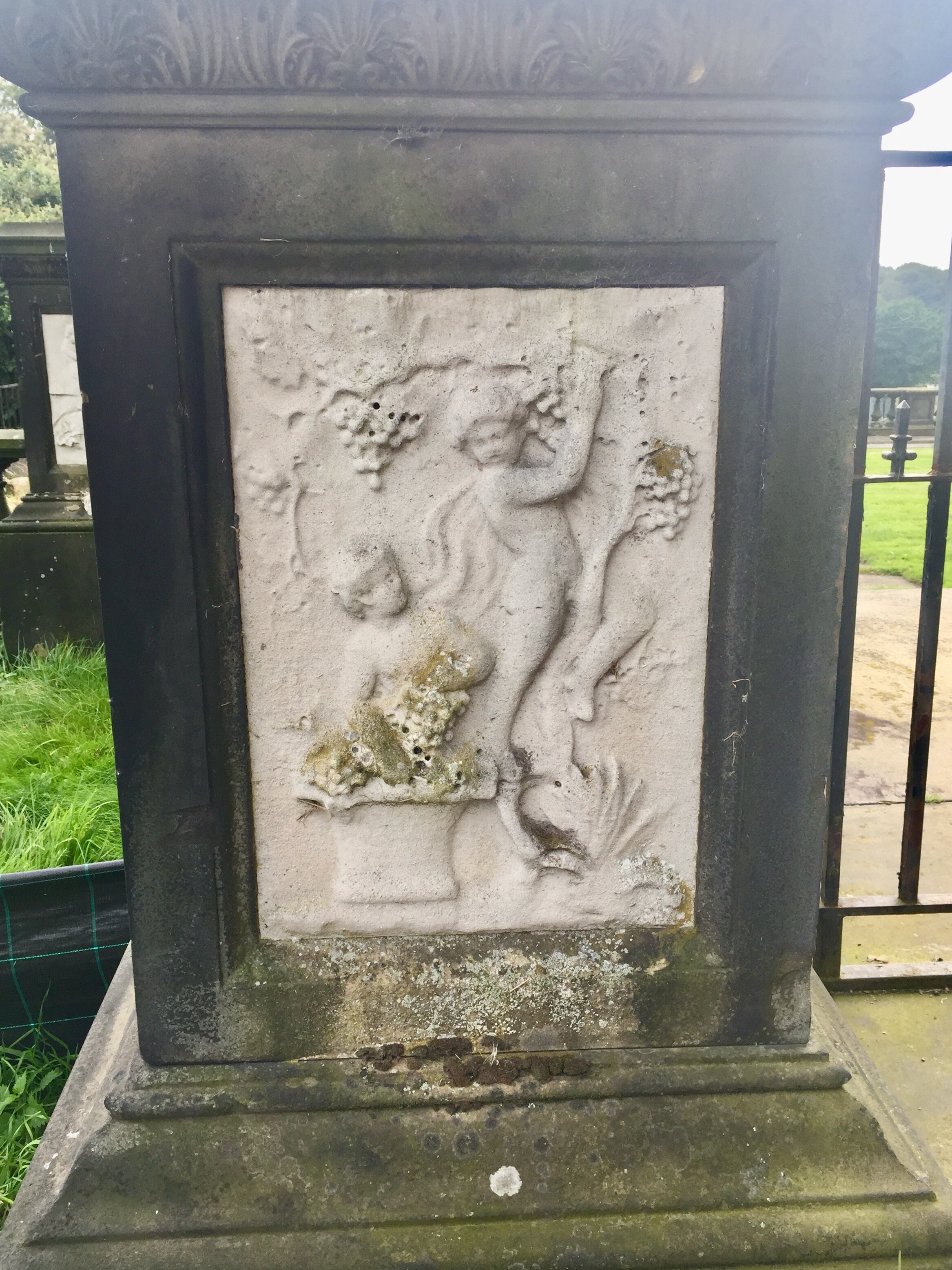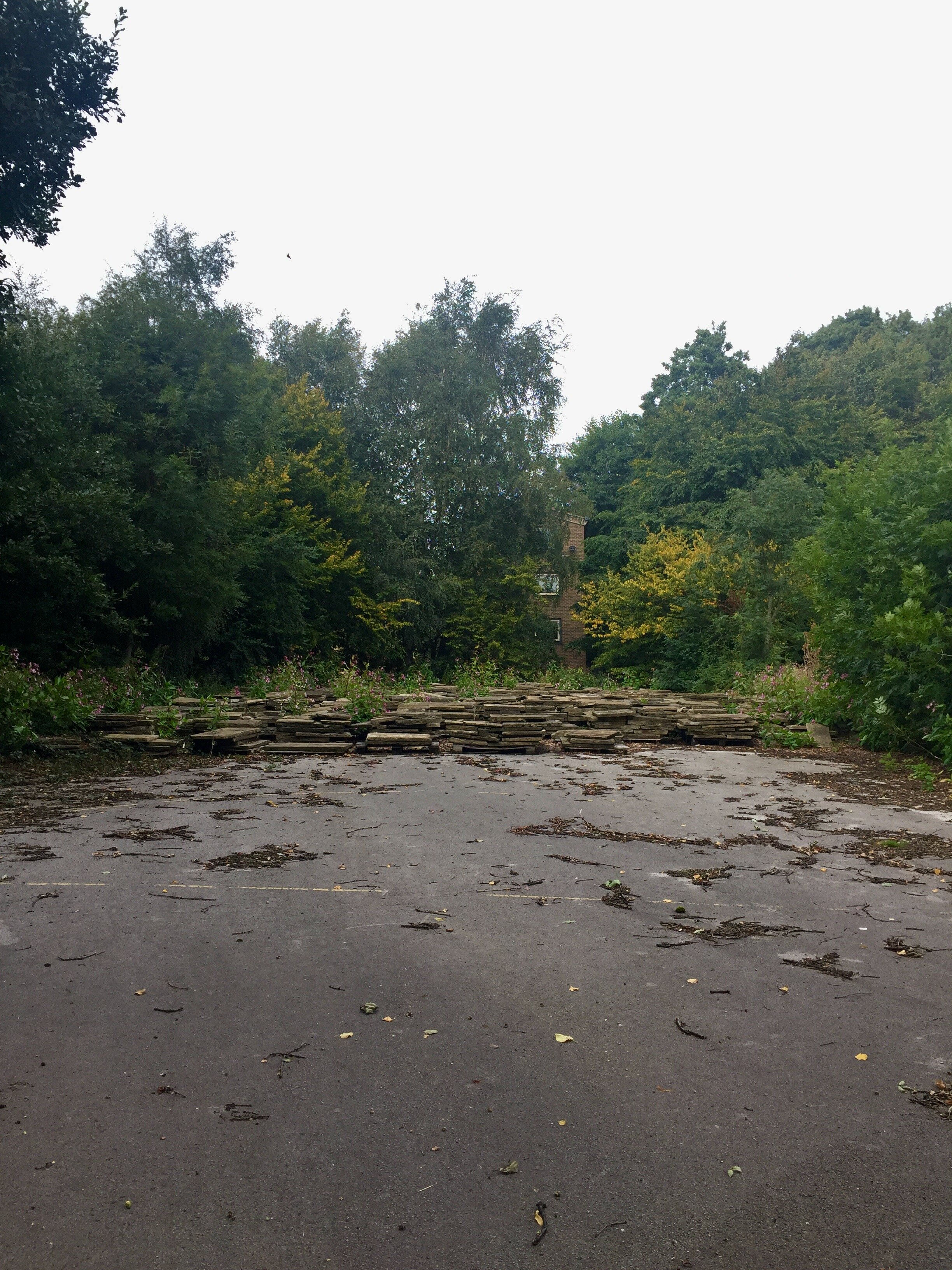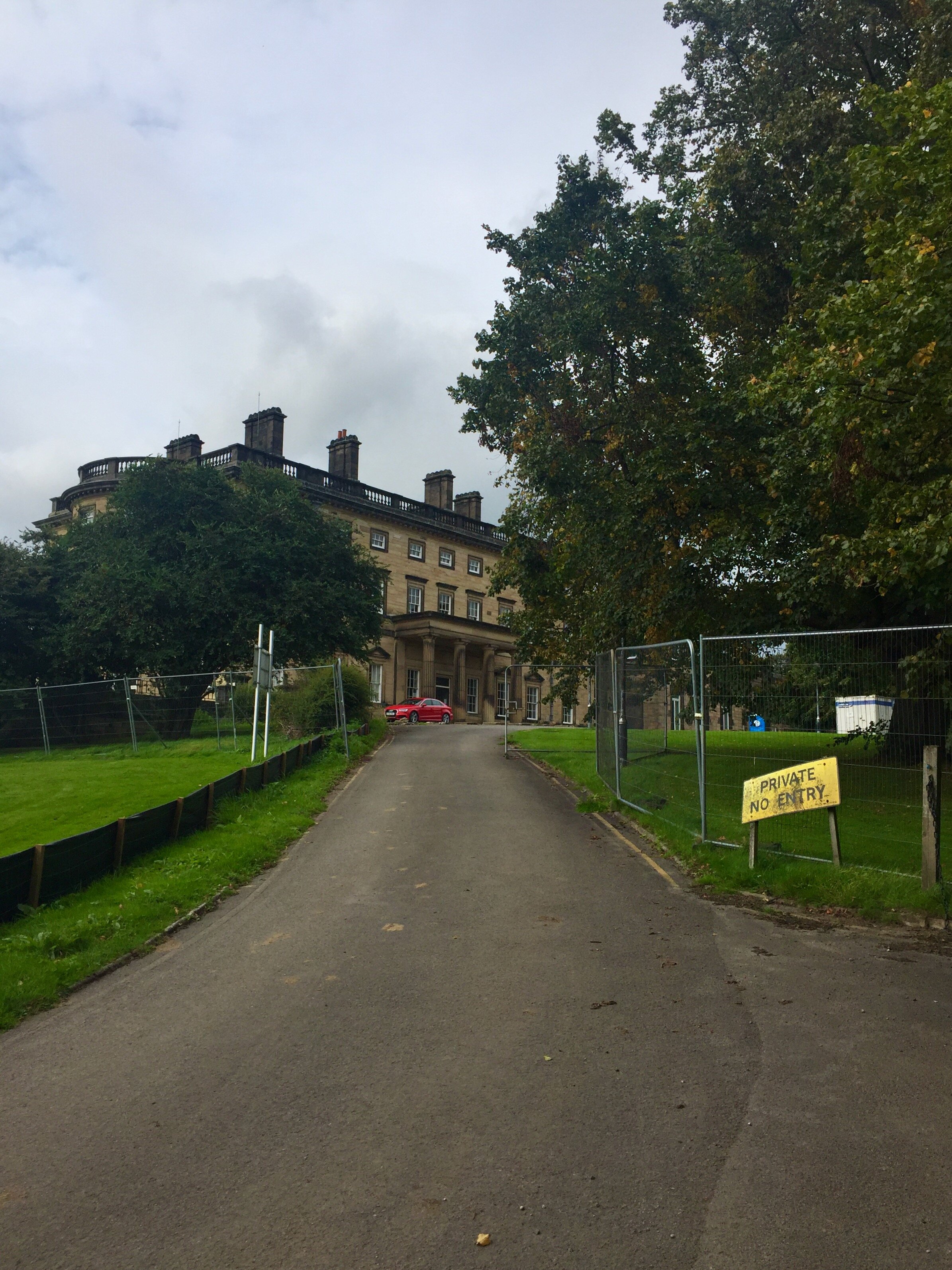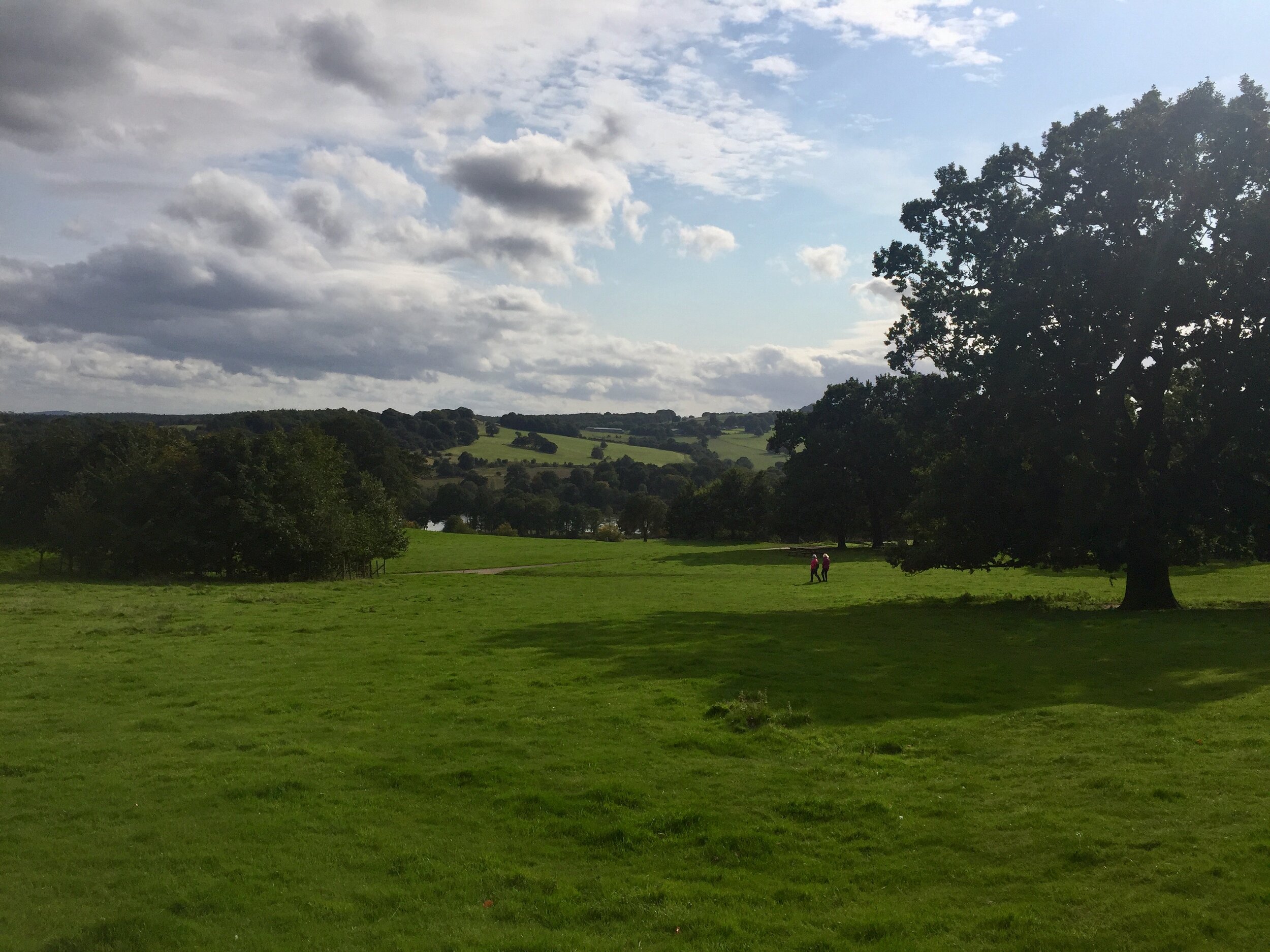Bretton Hall College
The old Experimental Theatre building with its mask in the performance area. Through the entrance gate is the Stable Block, whose clock pokes up above the buildings.
There was an arts college in the middle of Yorkshire Sculpture Park?
Many people are surprised that there was a teacher training and arts college in the middle of the Yorkshire Sculpture Park. How did there come to be so many modernist buildings in this incredible landscape? Can you imagine how amazing it would have been to study here? Why didn’t I know this was an option when I was looking through Higher Education prospectuses?
But it’s the other way round: the sculpture park exists precisely because of Bretton Hall College.
How the whole estate (dating from the 12th Century) came to be in the hands of the West Riding Council is the familiar tale of British aristocratics struggling with the upkeep of their huge ancestral homes in the 20th Century: by 1935, the Beaumonts who owned the estate had started selling off parts of their land. Then, in 1939, the army took up residence as World War II broke out, and the family moved to their Northumberland home, never to return.
In 1946, the educationalist Alec Clegg, Chief Education Officer at the county council, asked the Ministry of Education to approve a new college. Originally, it was thought up as “a training college for men with a musical bias”, but its remit expanded to become a teacher training college for Art, Drama and Music.
So it was that when the army finally left in 1947, the West Riding of Yorkshire bought up the hall, its lodges, its lakes and 260 acres of land for a snip at £34,024 (around £1.4 million in today’s money).
The college opened on 25th September 1949. Its occupants consisted of the principal, six tutors (in Education, English, Art, Music and PE) and 56 students (26 women and 30 men).
Despite continually shaky finances, the college developed: by 1963 there were clusters of modernist buildings all across the site, including eleven “hostels” as accommodation for up to 300 students. Shortly after, the college became affiliated with the University of Leeds for the purpose of awarding degrees.
The architect’s plan for the 1963 development. Click to expand.
It was in 1977 that the sculpture park came to be. Peter Murray, an art lecturer at the college, proposed letting sculptural artists interact with the open air, and for the estate to be open to the public for the first time in its history: the beautiful grounds became a vast performance space for sculpture.
While the sculpture park grew in renown, financial difficulties plagued the college, eventually leading to a merger with the University of Leeds in 2001 that was the beginning of the end: within another few years, it was deemed that the college wasn’t viable. It was put up for sale in 2004, and the last teaching took place on 2nd May, 2007. The buildings were then left to rot until major demolition work began in 2017. Here are the structures that remain:
I’ve drawn round what remains of the college buildings today. Buildings in blue were constructed since 1963 and are still on site. Most of the roads and pathways remain, and there are some extra, but the lake in front of the Victor Pasmore Studio has long gone. Click to expand.
There was uncertainty about the fate of the sculpture park after the college’s closure, but the whole site is now in the hands of Wakefield Council. The buildings that remain are now leased to Rushbond Plc, who are planning to turn the hall into a luxury hotel with restaurants, bars, a spa and conference facilities on site.
The exception is the National Arts Education Archive, which is right in the middle of the campus. It’s because this important library and archive is still in use (with occasional exhibitions) that it’s quite easy to gain access to the site: the gap in the fence is literally signposted. However, there are no signs once you’re in, so it’s not our fault that we ended up exploring.
Links and Sources
Some alumni of Bretton Hall College have set up a very comprehensive website, which is bursting with information and pictures. There you can find everything from a timeline of Bretton Hall from 1158 to 1949, to videos of previous students visiting the decaying hostels in 2013 (some four years before they were finally demolished).
You can find out more about the history of Yorkshire Sculpture Park on their website, along with some up to date information about the National Arts Education Archive.
Famous Bretton Hall Alumni
It would be remiss of me not to mention that the the acting contingent of the League of Gentlemen (Mark Gatiss, Steve Pemberton and Reece Shearsmith — Jeremy Dyson was studying in Leeds) all went to Bretton Hall College.
Other notable alumni include the educationalist, Sir Ken Robinson, who died this August, the comedian and activist Mark Thomas, the playwright John Godber, lots of actors who have starred in a whole variety of British soap operas, and RICHARD O’BRIEN.
Newsletter
The second of my monthly newsletters will be making its way to inboxes in a few days. If you’d like your inbox to be amongst them, you can sign up here.



